Ever since our first royal commission in 1735, Garrard has been crafting jewellery for the British Royal Family. When Queen Victoria appointed Garrard the first official Crown Jeweller in 1843, it marked the start of a new era in our heritage, with some of history’s most important jewels and regalia brought to life in our workshop, each carefully noted in our Royal Ledgers. From iconic tiaras to some of Queen Elizabeth II’s most cherished brooches, these legendary creations are recognised and celebrated throughout the world.
Prince Albert commissioned Garrard to create a magnificent sapphire and diamond cluster brooch for Queen Victoria, which he gave to her on the eve of their wedding. She chose to get married in it the very next day, wearing it as her “something blue”. After Queen Elizabeth II ascended to the throne in 1952, she was often spotted in Victoria’s sapphire brooch.

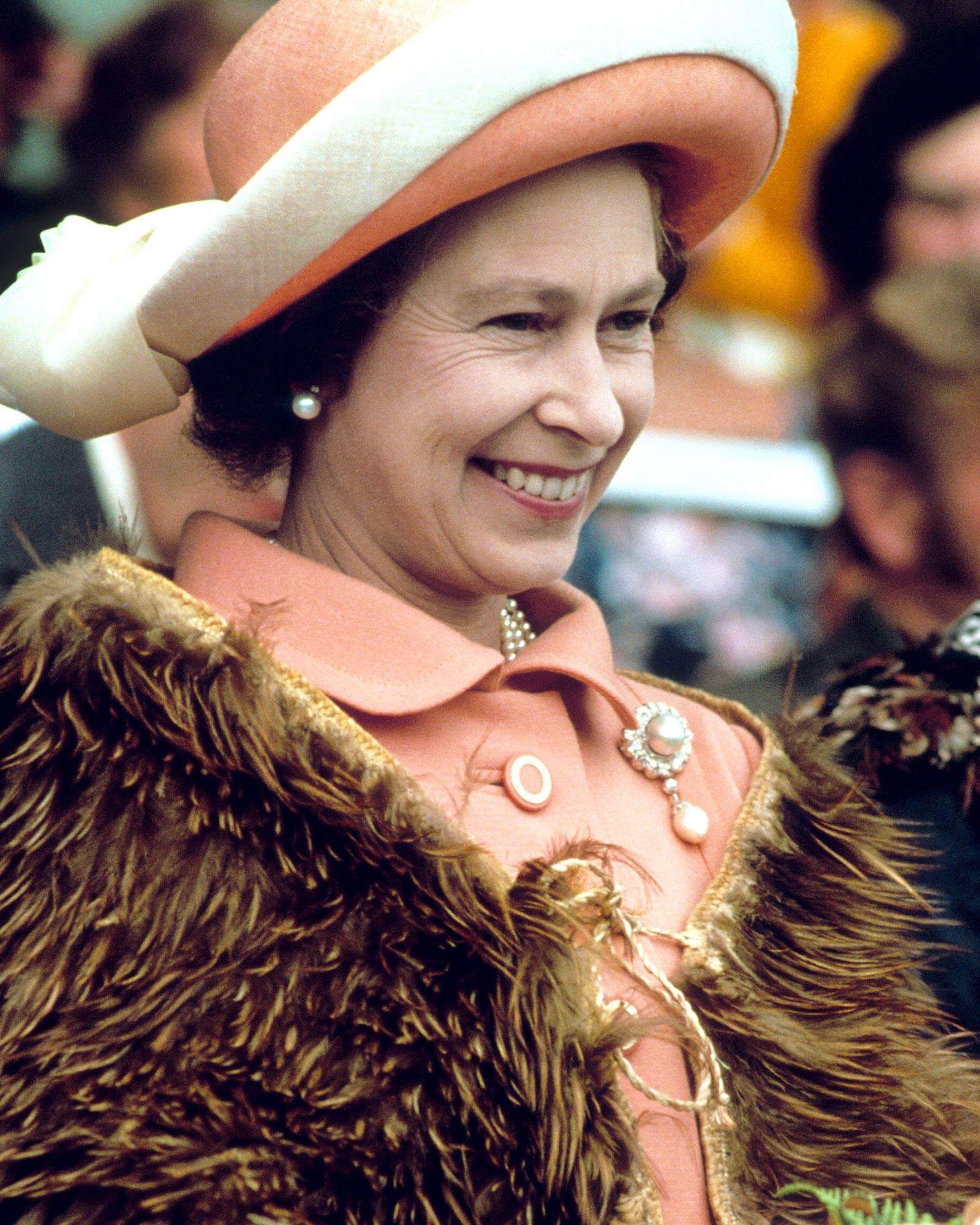
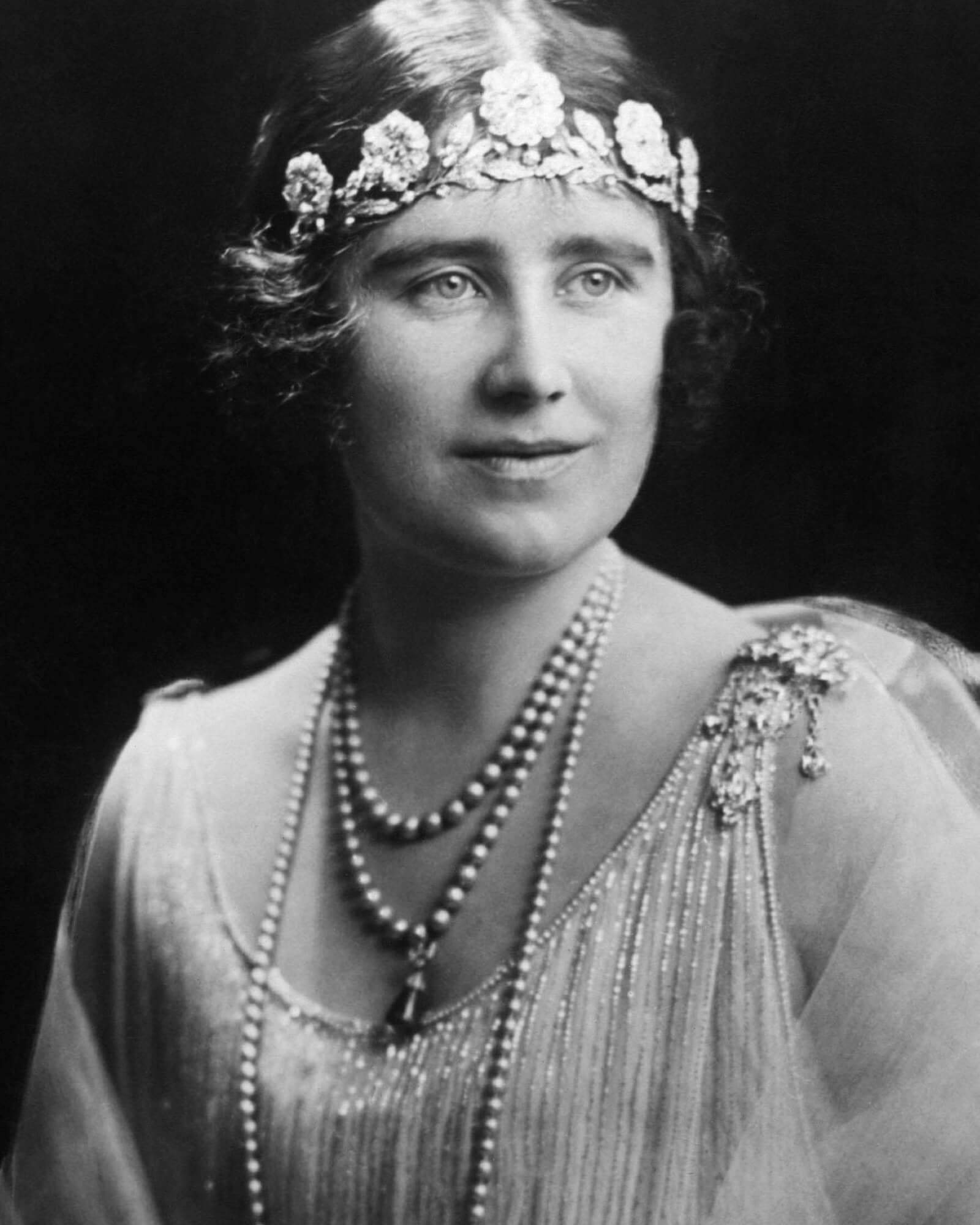
Like all the members of her family, Augusta, Duchess of Cambridge used Garrard as her principal jeweller. Daughter-in-law to George III, Garrard created this brooch for the Duchess using diamonds and natural pearls. It was among the collection of brooches frequently worn by Queen Elizabeth II.
Like all the members of her family, Augusta, Duchess of Cambridge used Garrard as her principal jeweller. Daughter-in-law to George III, Garrard created this brooch for the Duchess using diamonds and natural pearls. It was among the collection of brooches frequently worn by Queen Elizabeth II.
Prince Albert commissioned the Oriental Circlet Tiara for his wife, Queen Victoria. Set with opals and diamonds, Mughal arches and lotus flowers were woven into the design. The opals were later replaced with rubies at the request of Queen Alexandra, who believed them to be unlucky. The circlet went on to become one of Queen Elizabeth The Queen Mother’s most-worn jewels.

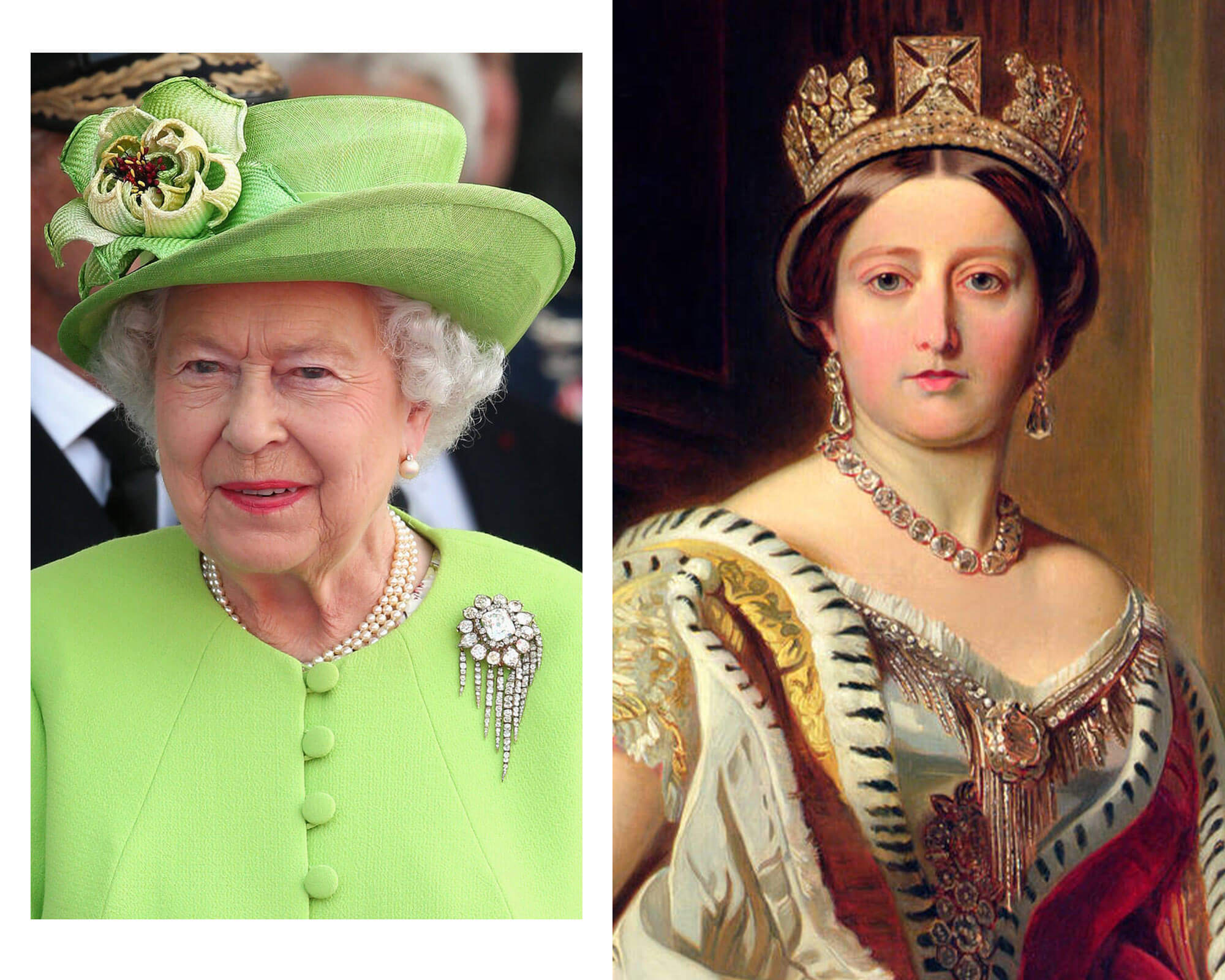
Adapted from a chaine de corsage made for Queen Victoria, the cluster style is enhanced by nine strands of diamonds suspended beneath. The brooch was displayed as part of the exhibition Diamonds: A Jubilee Celebration at the Summer Opening of Buckingham Palace in 2012.
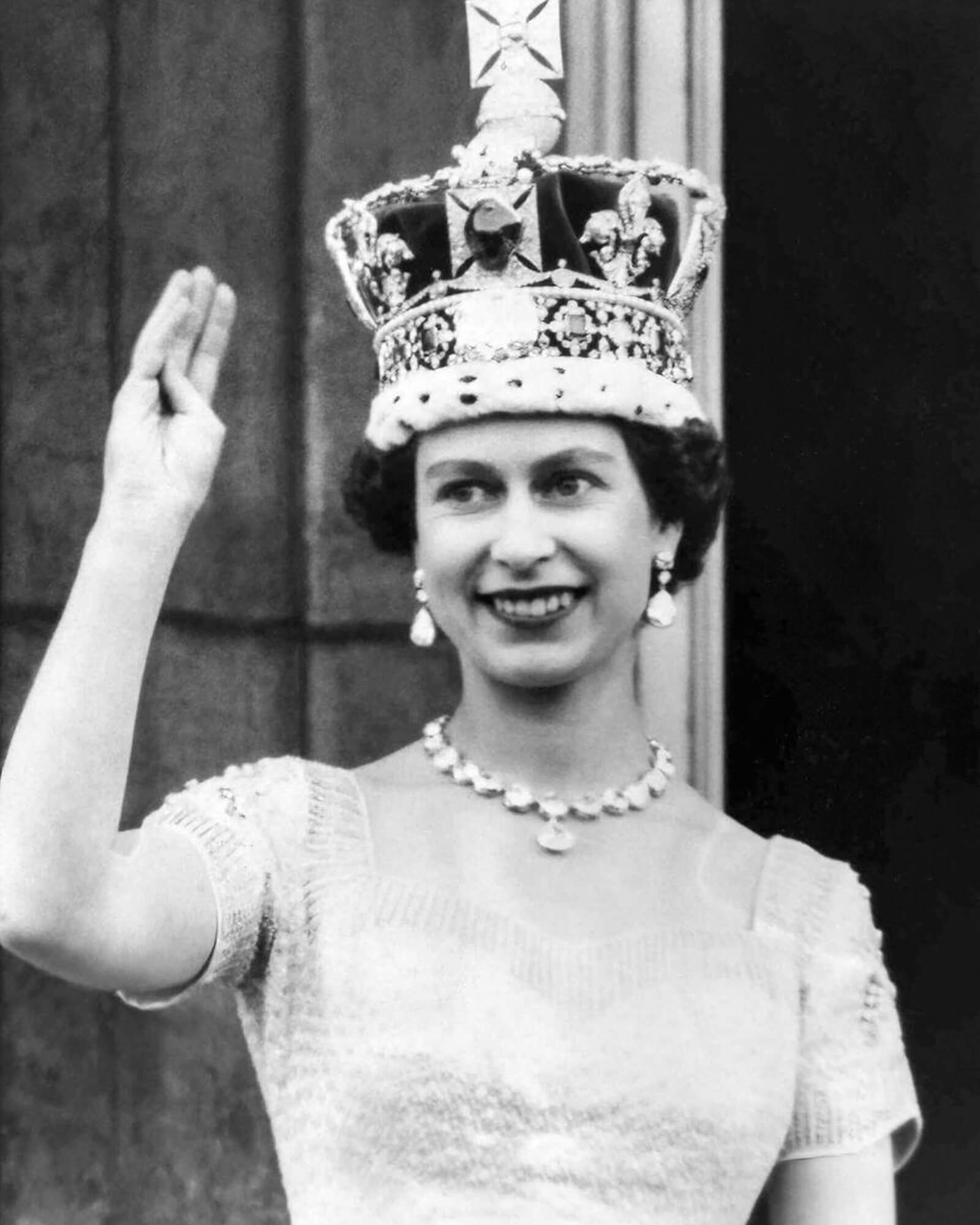
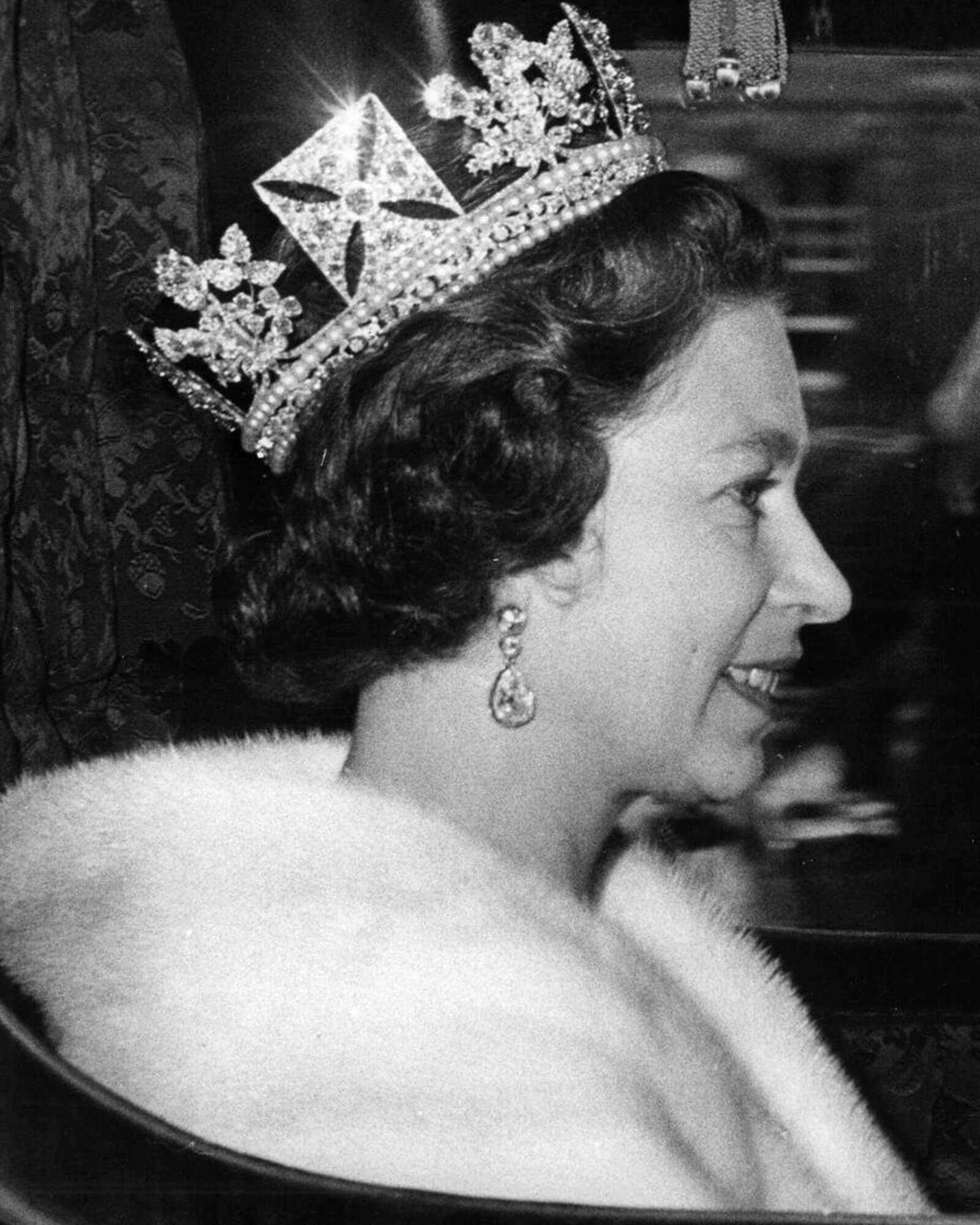
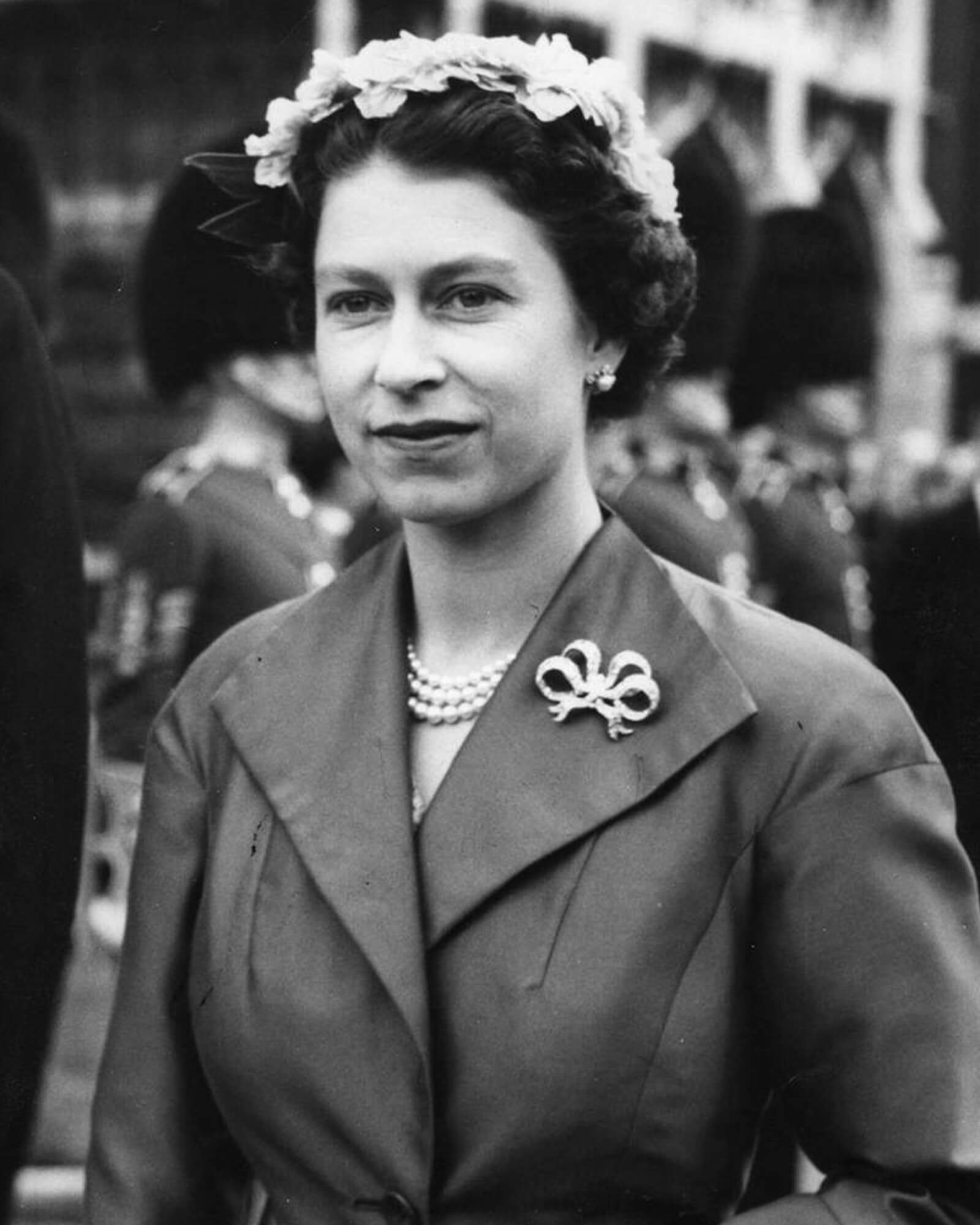
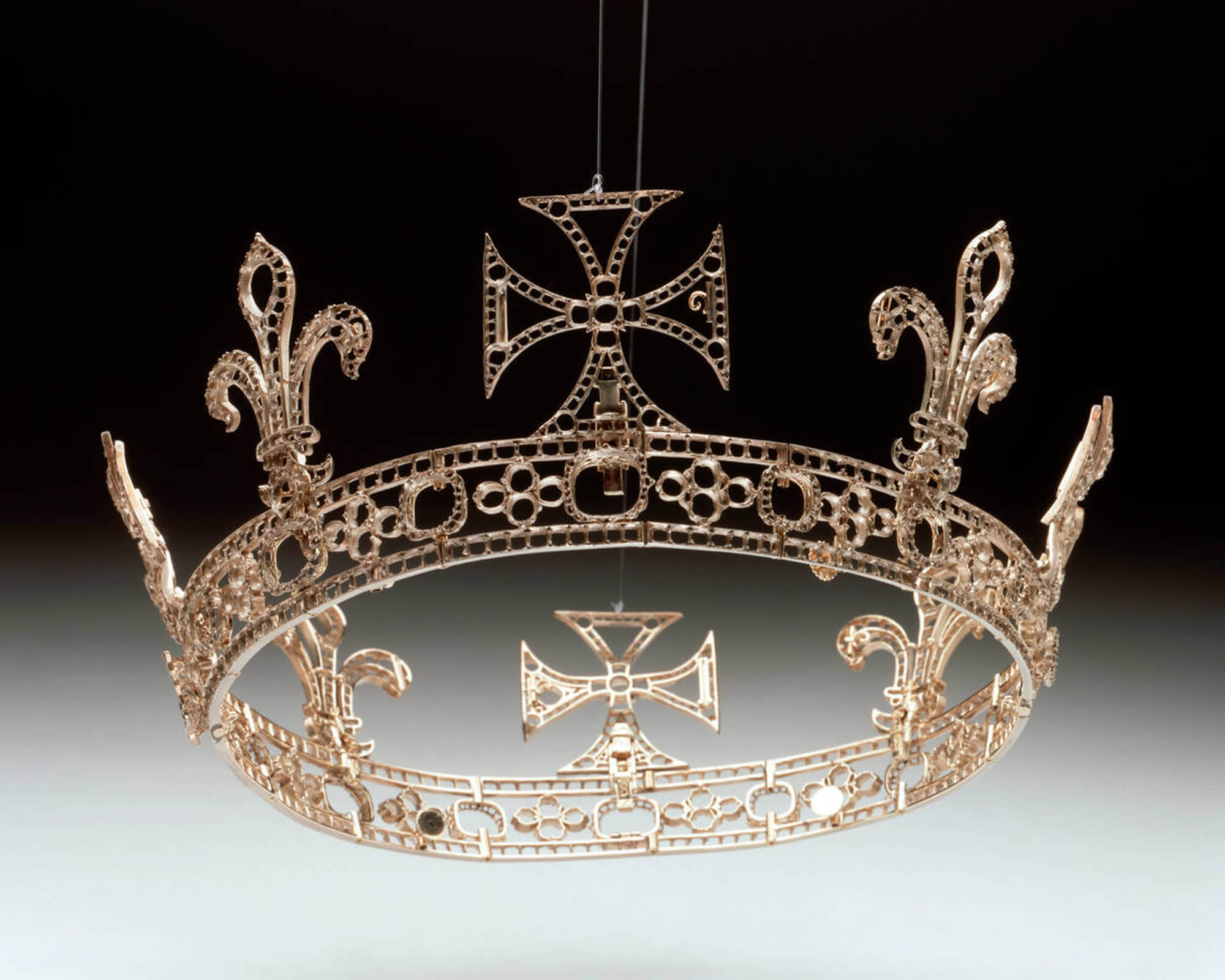
With alternating fleur-de-lis and cross pattée patterns, the Regal Circlet was created for Queen Victoria using diamonds taken from other royal jewels. The precious stones were removed in the 1930s, with the diamonds used for Queen Elizabeth II’s consort crown. The empty frame now resides in the Museum of London.
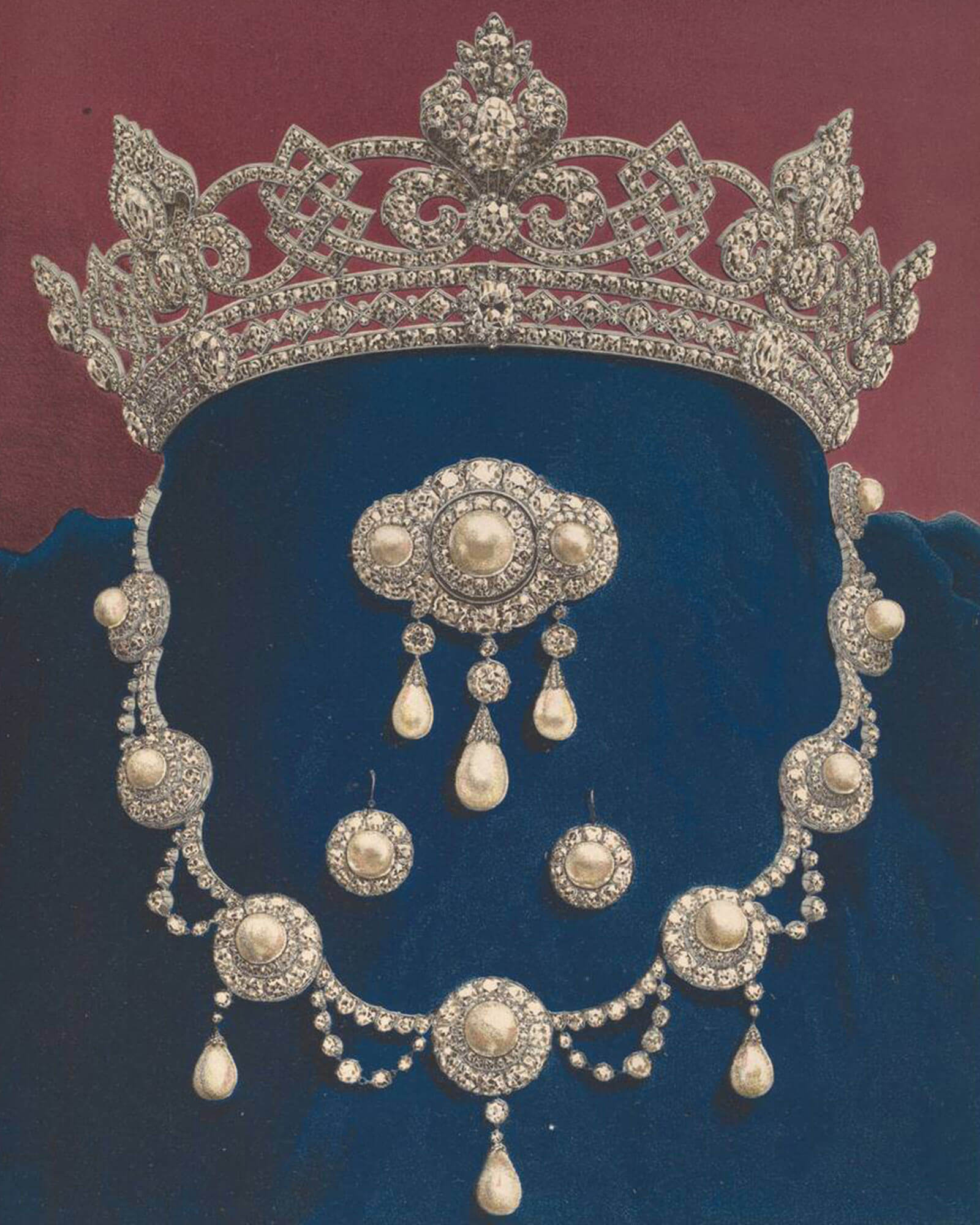
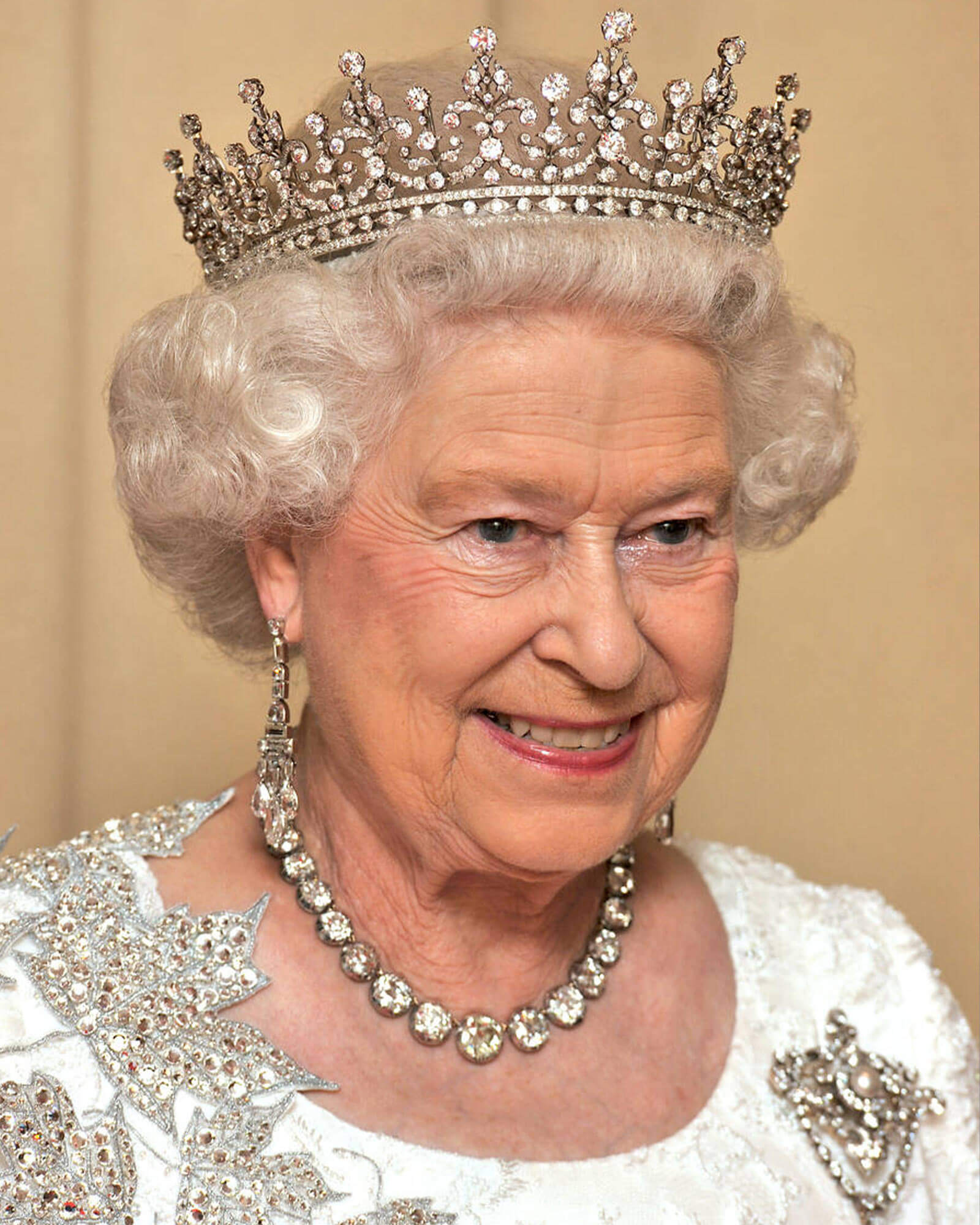
Queen Alexandra’s pearl and diamond wedding parure was a wedding present from Albert Edward, Prince of Wales, the future King Edward VII. Sadly, after Alexandra’s death without a will, the tiara was lost. Today, only the earrings, brooch and necklace survive. Catherine, Princess of Wales wore the necklace for the first time at the Netherlands State Banquet in 2018.
Set with spectacular old-cut Golconda diamonds, this classic rivière necklace was given to Princess Alexandra by the City of London to celebrate her marriage to Edward, Prince of Wales, almost 40 years before he was crowned king. Queen Elizabeth II wore the necklace regularly throughout her reign.
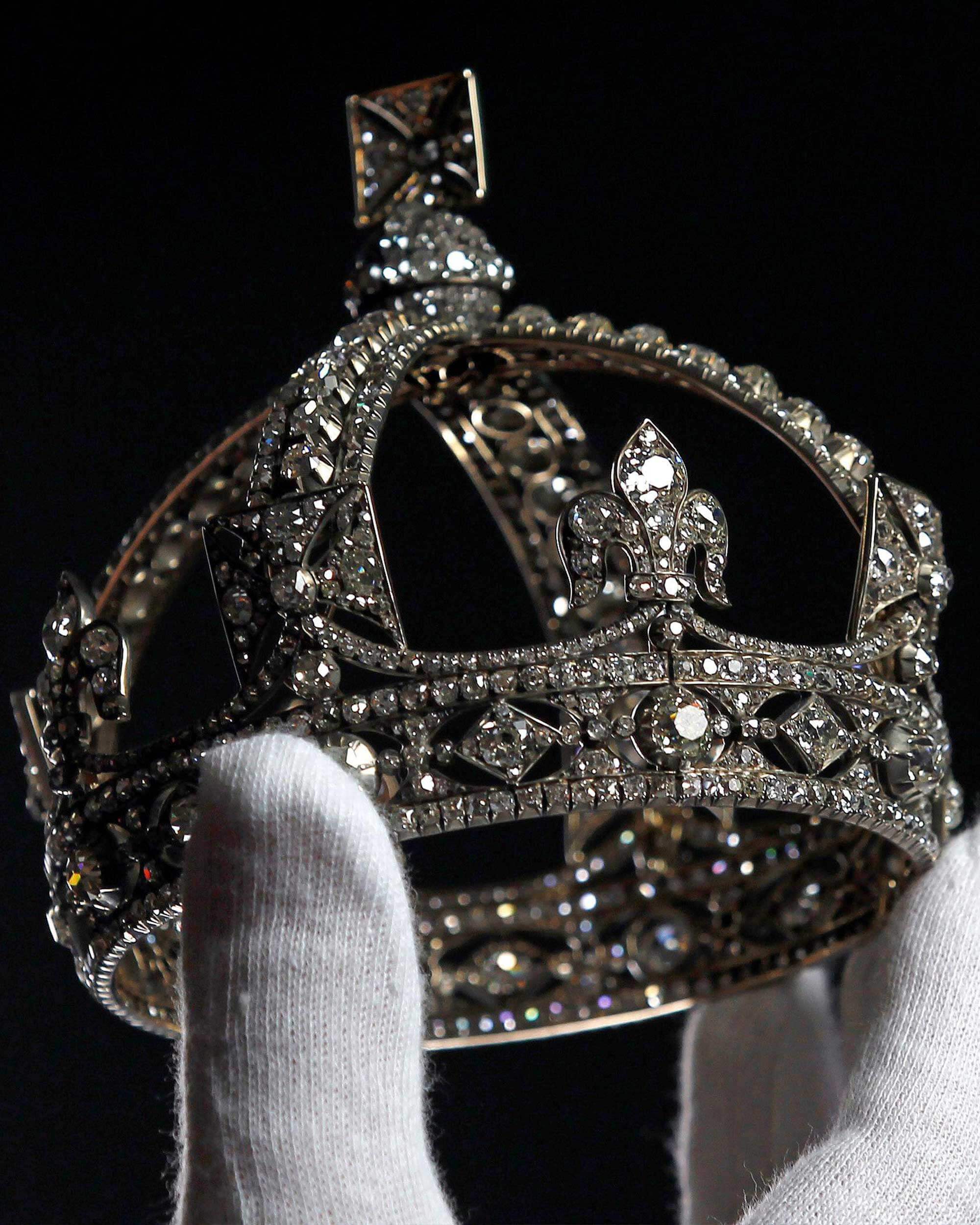
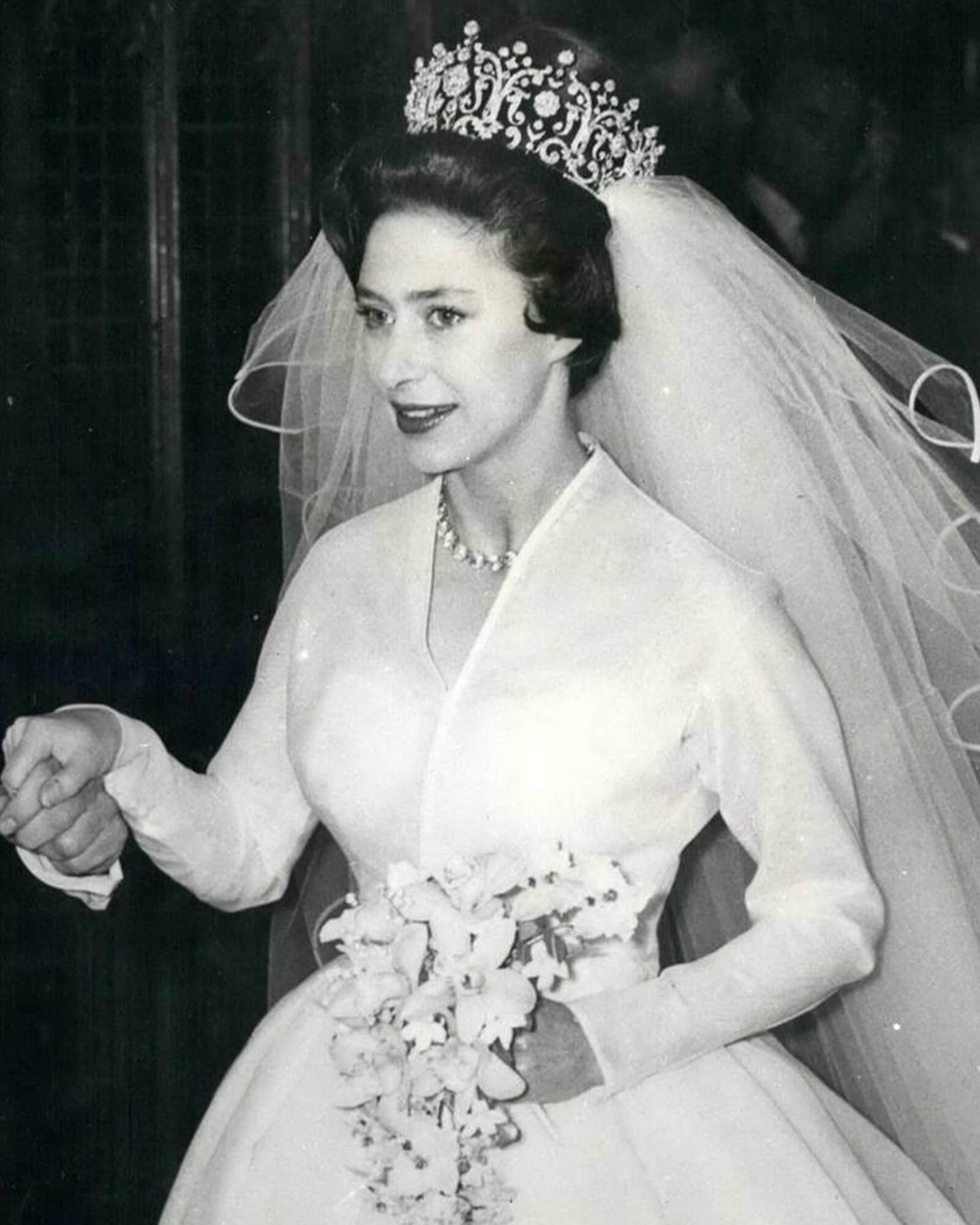
Following the death of her husband Albert in 1861, Queen Victoria went into mourning. In 1870, she commissioned Garrard to create a miniature Imperial State Crown that was small enough to be worn above her widow’s cap. Visitors to the Tower of London can see it on display in the Jewel House.
Named after its original owner, the Poltimore Tiara was purchased in 1959 by Princess Margaret, who wore it on her wedding day the following year. A brilliant example of Garrard’s expertise in creating transformable jewels, it can also be worn as a necklace and 11 separate brooches. A prized possession, Princess Margaret’s husband famously photographed her wearing the tiara in the bathtub at Kensington Palace in 1962.
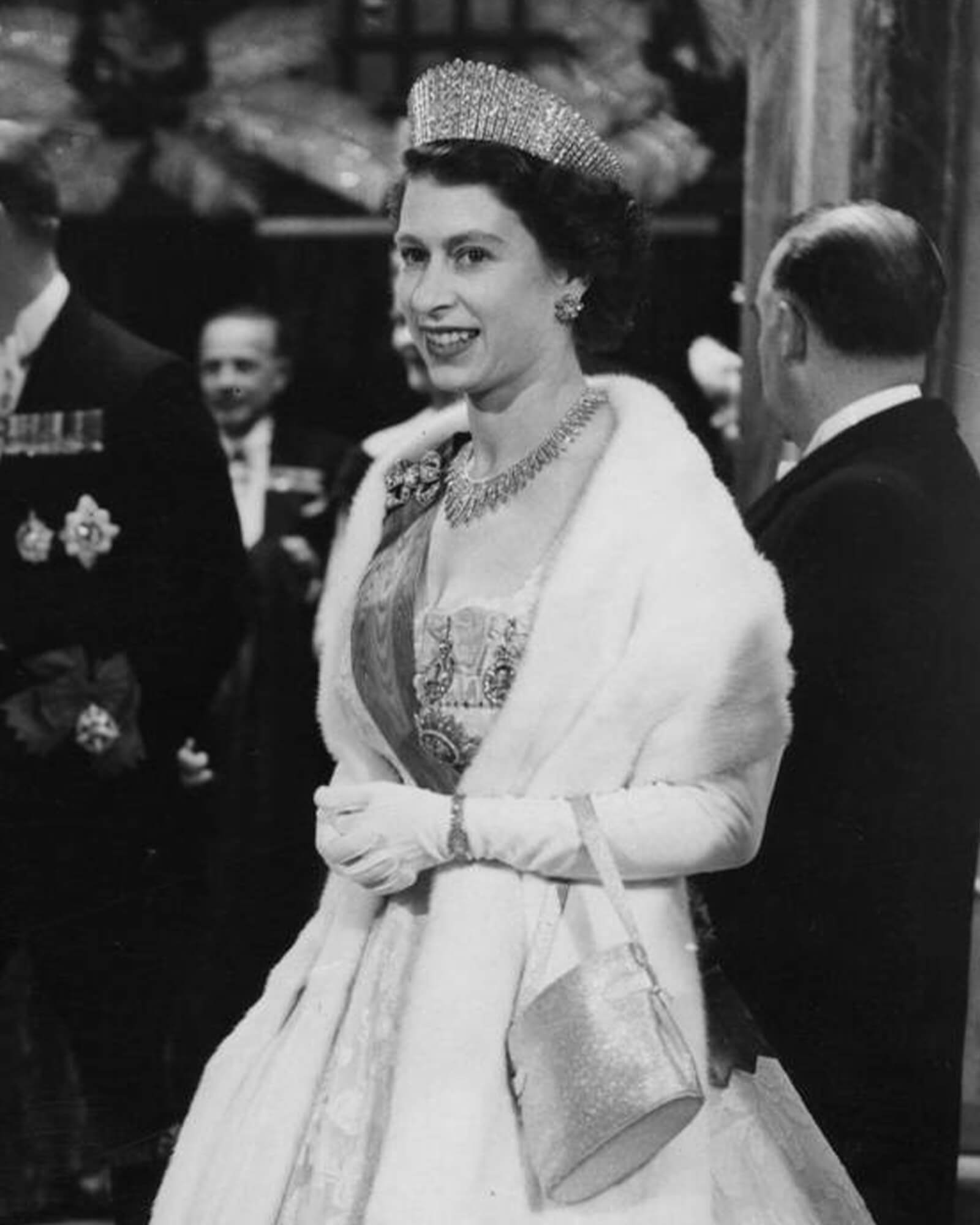
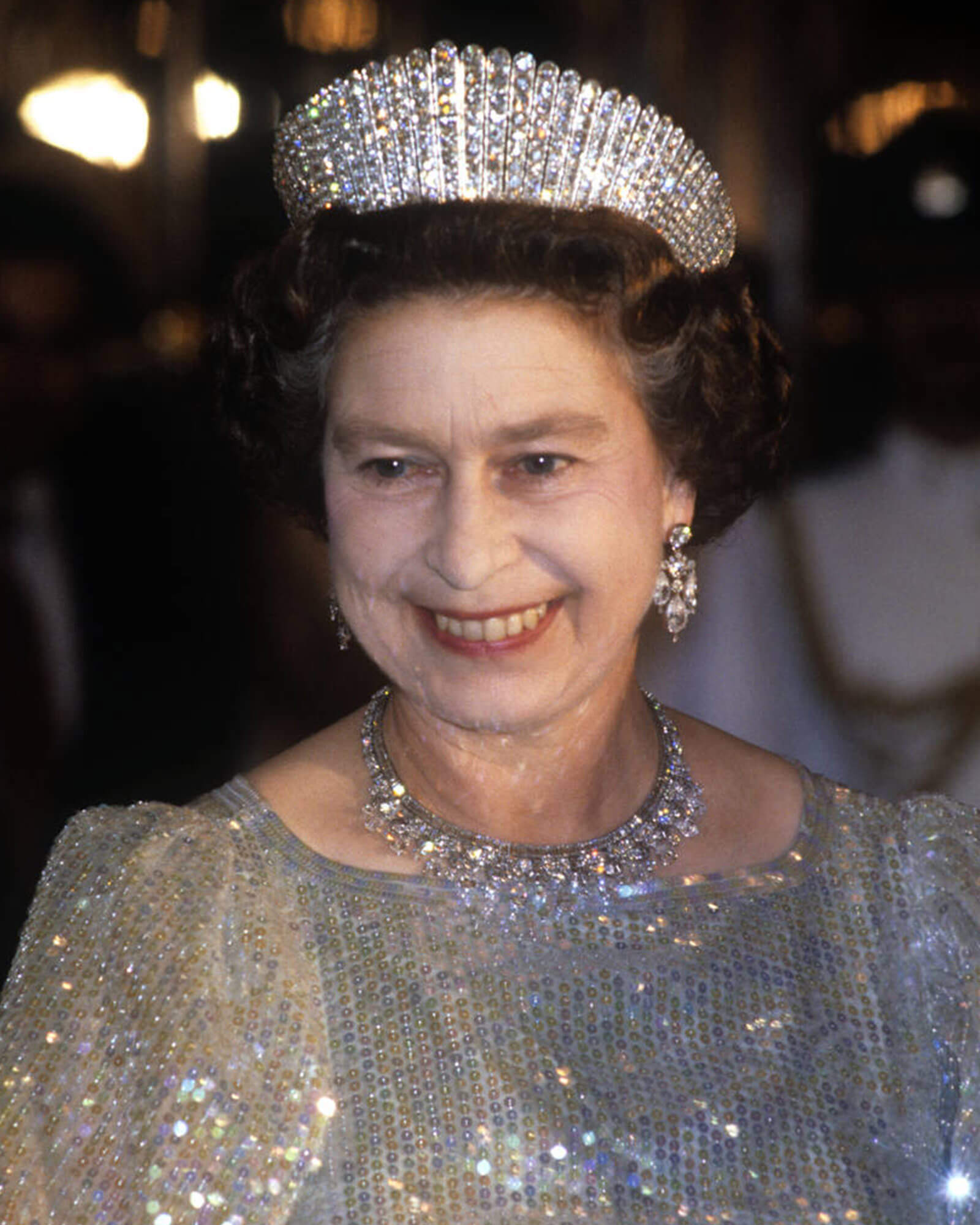
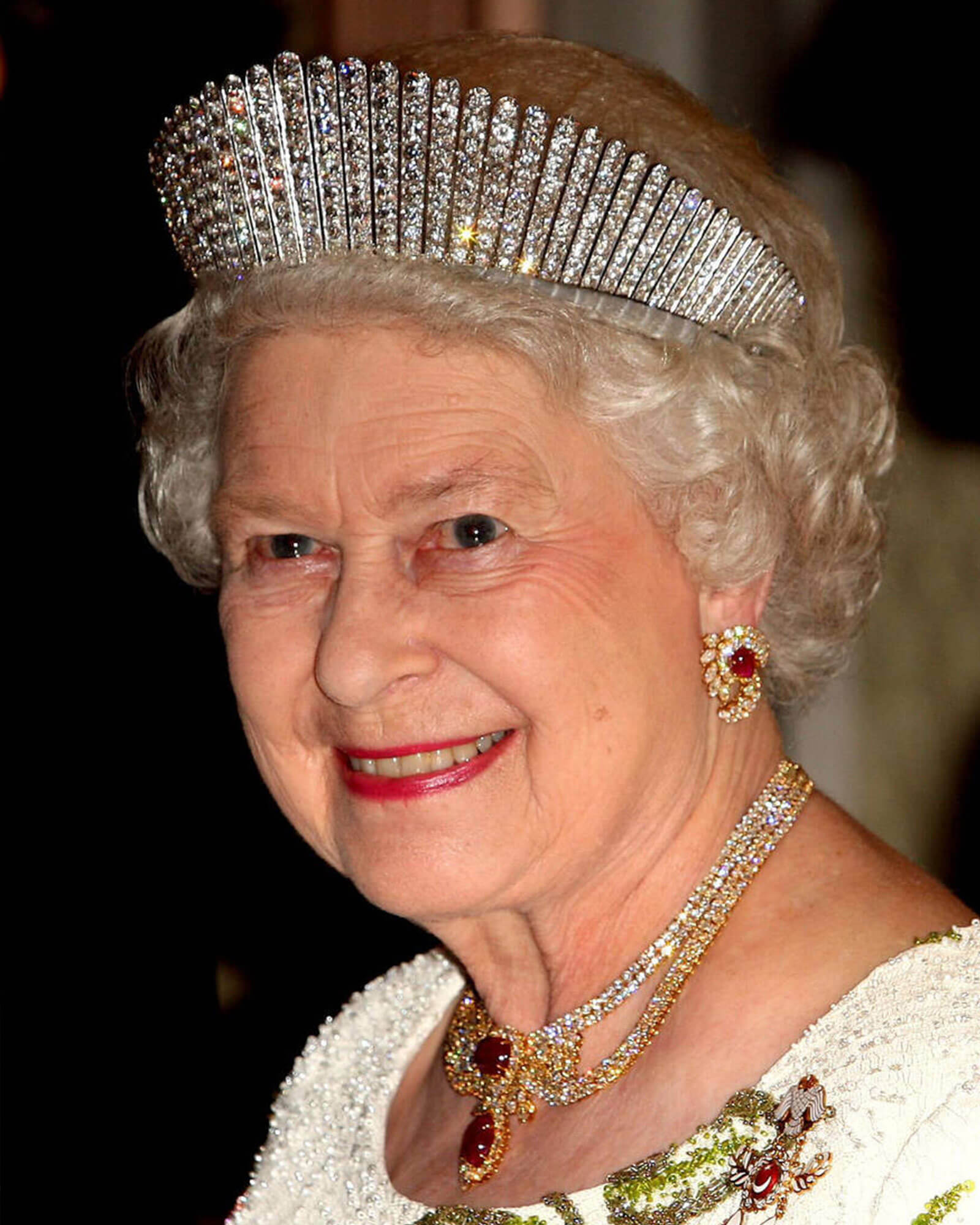
The design of Queen Alexandra’s Kokoshnik Tiara was inspired by the traditional halo-shaped Russian headdress after which it is named. The convertible tiara, which can also be worn as a necklace, was inherited by Queen Mary, who bequeathed it to her granddaughter, Queen Elizabeth II, in 1953. The Queen wore it consistently throughout her reign.
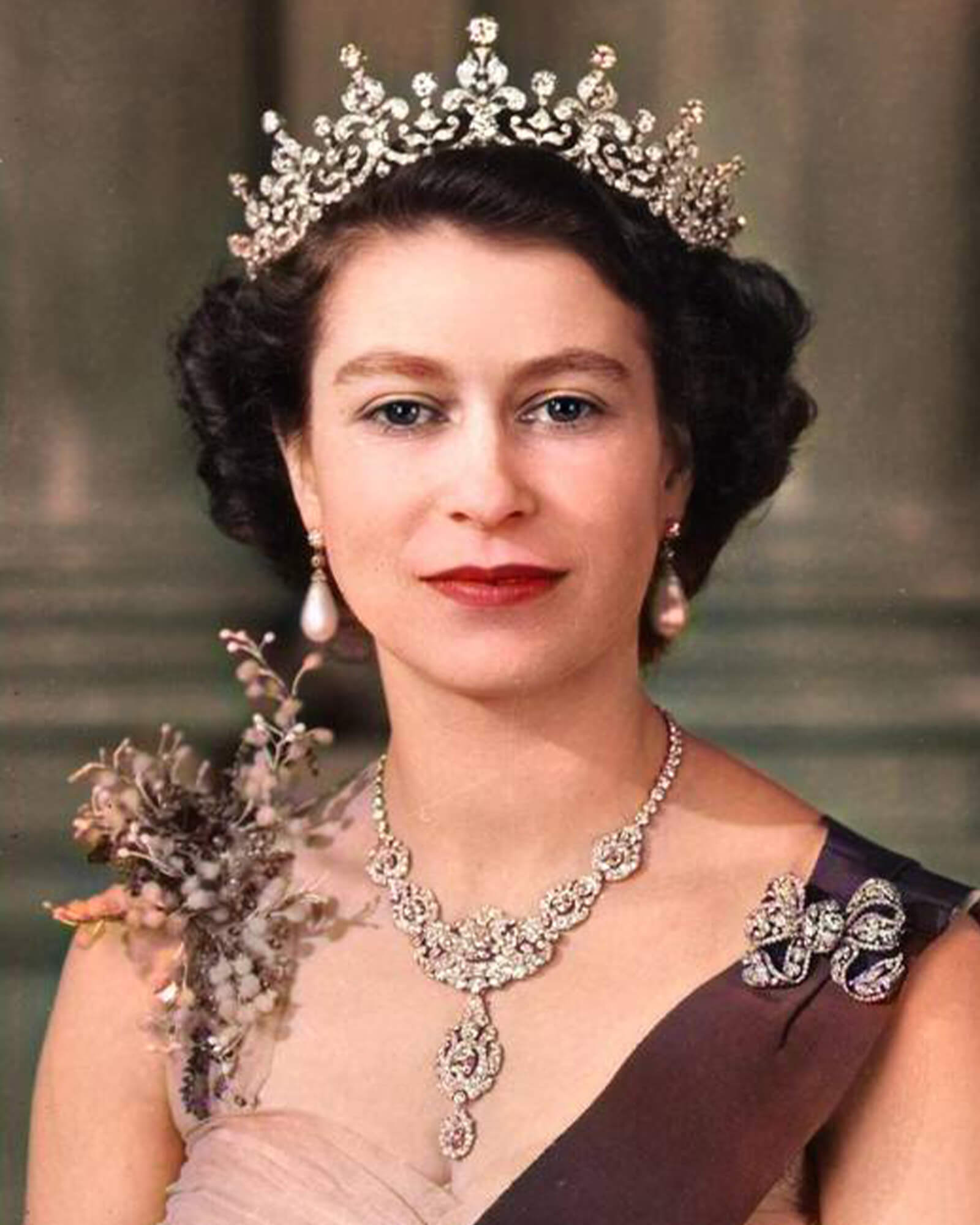
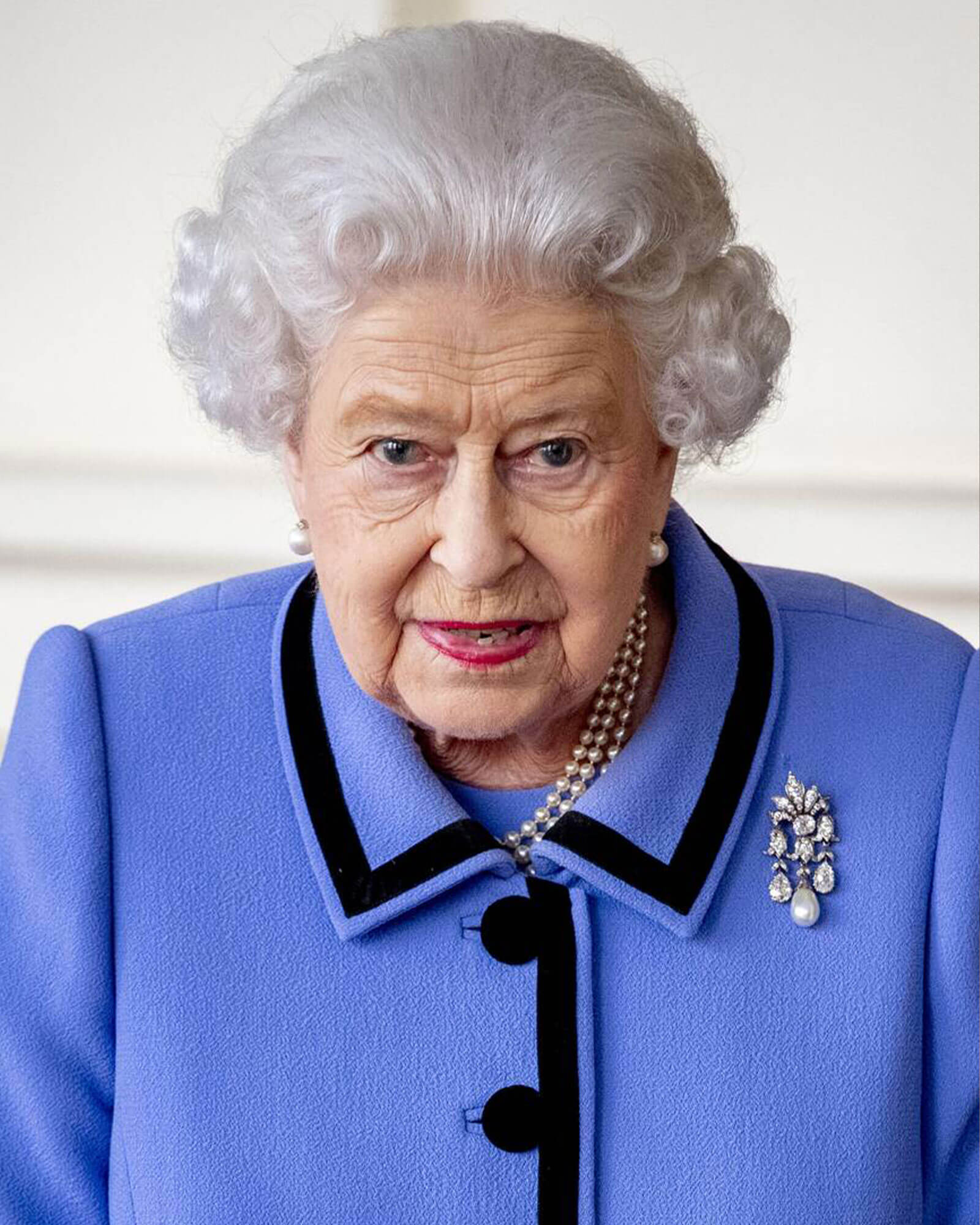
This iconic tiara was named after the committee responsible for raising the funds to pay for it as a wedding gift to Queen Mary. Topped with pearls and designed to be transformable, the pearls were later replaced with diamonds. Featured in portraits, on stamps and on currency, worn by Queen Elizabeth II, it is among the best known of all the royal tiaras made by Garrard.
This brooch was presented to Princess Victoria of Teck, later Queen Mary, on her marriage to the future King George V on behalf of the women of Hampshire. Originally designed as a pendant jewel, it was later converted into a brooch for Queen Mary, who bequeathed it to Queen Elizabeth II in 1953.
Given to Queen Victoria by the members of her royal household to celebrate the Diamond Jubilee of 1897, this brooch was frequently worn by Queen Elizabeth The Queen Mother throughout her long life

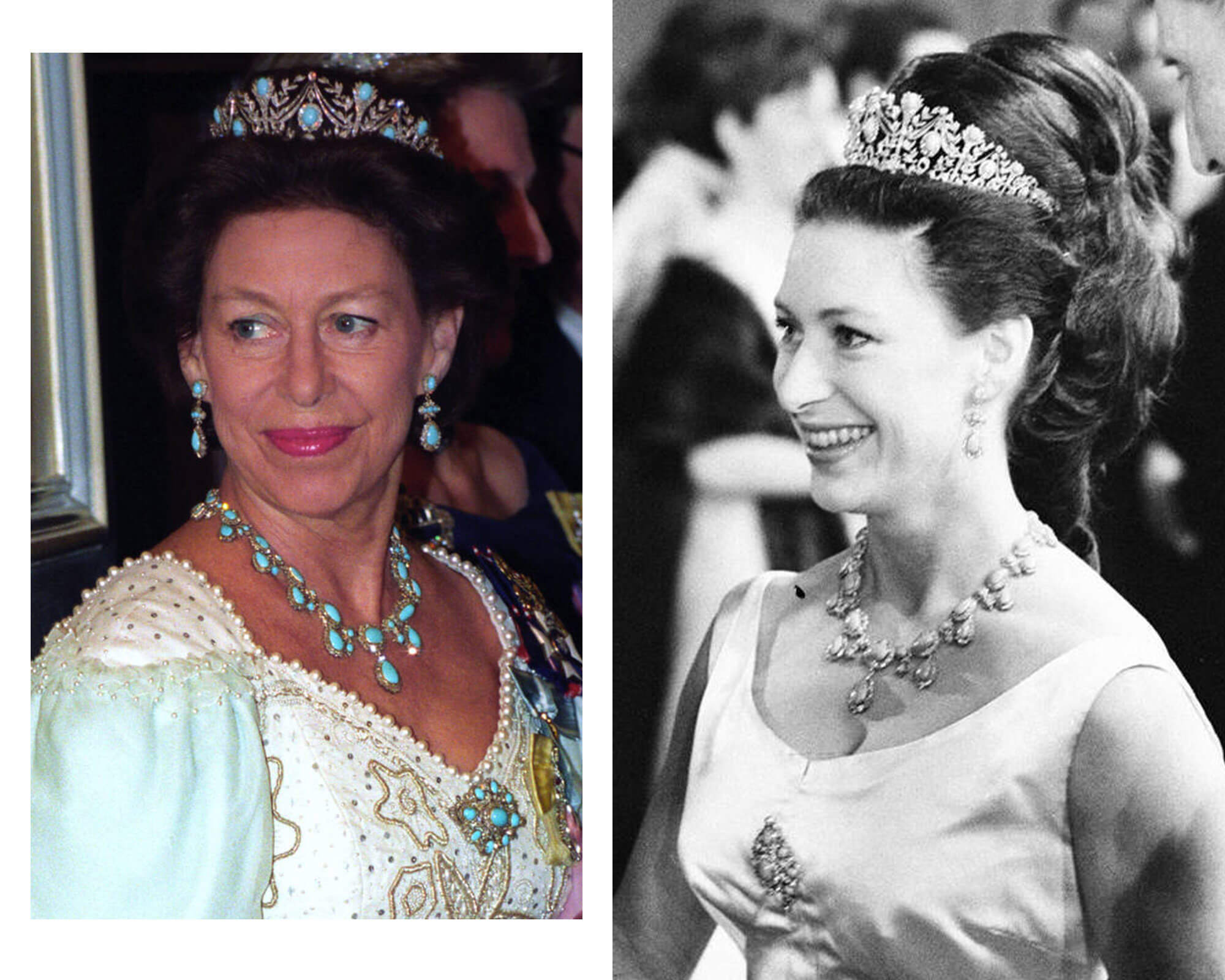
Queen Mary acquired a suite of jewels from Garrard set with Persian turquoise and diamonds, including the tiara worn here by Princess Margaret. In 1923, the jewels were given to Queen Elizabeth The Queen Mother, who in turn gifted them to her younger daughter, Princess Margaret, as a 21st birthday present. When Margaret died in 2002, a great number of her jewels were auctioned. However, this tiara was not included in the sale, with its whereabouts remaining a mystery.
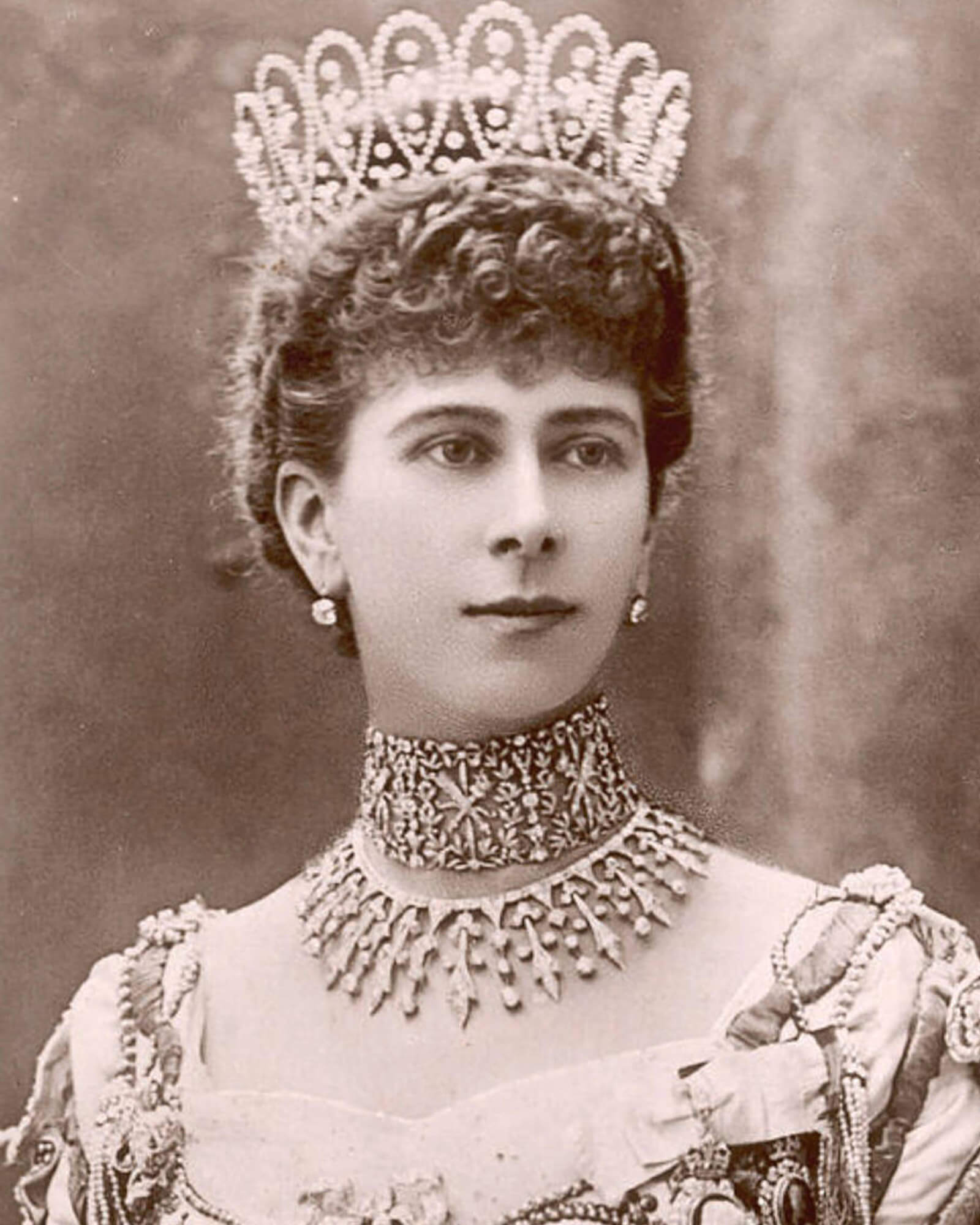

Delicately crafted in the Louis XVI style, Garrard made the Love Trophy Collar for Queen Mary when she was Duchess of Cornwall and York. Formed of seven diamond-set panels, each features a bow, quiver and torch that combine to form an amatory, or love trophy.
Made in silver gilt, silver, velvet and ermine for the Prince of Wales, later King George V, to wear at the coronation of his father, King Edward VII, in 1902. The coronet was subsequently worn by King Edward VIII, when he was Prince of Wales.
Originally made at the request of King Charles II, the Sovereign’s Sceptre has been used at every coronation since 1661. One of the most recognisable of the Crown Jewels of Britain, it has undergone several alterations throughout its history. The most recent, and most significant, was in 1910, when Garrard redesigned the Sceptre to receive the historic 530carat Cullinan I diamond.

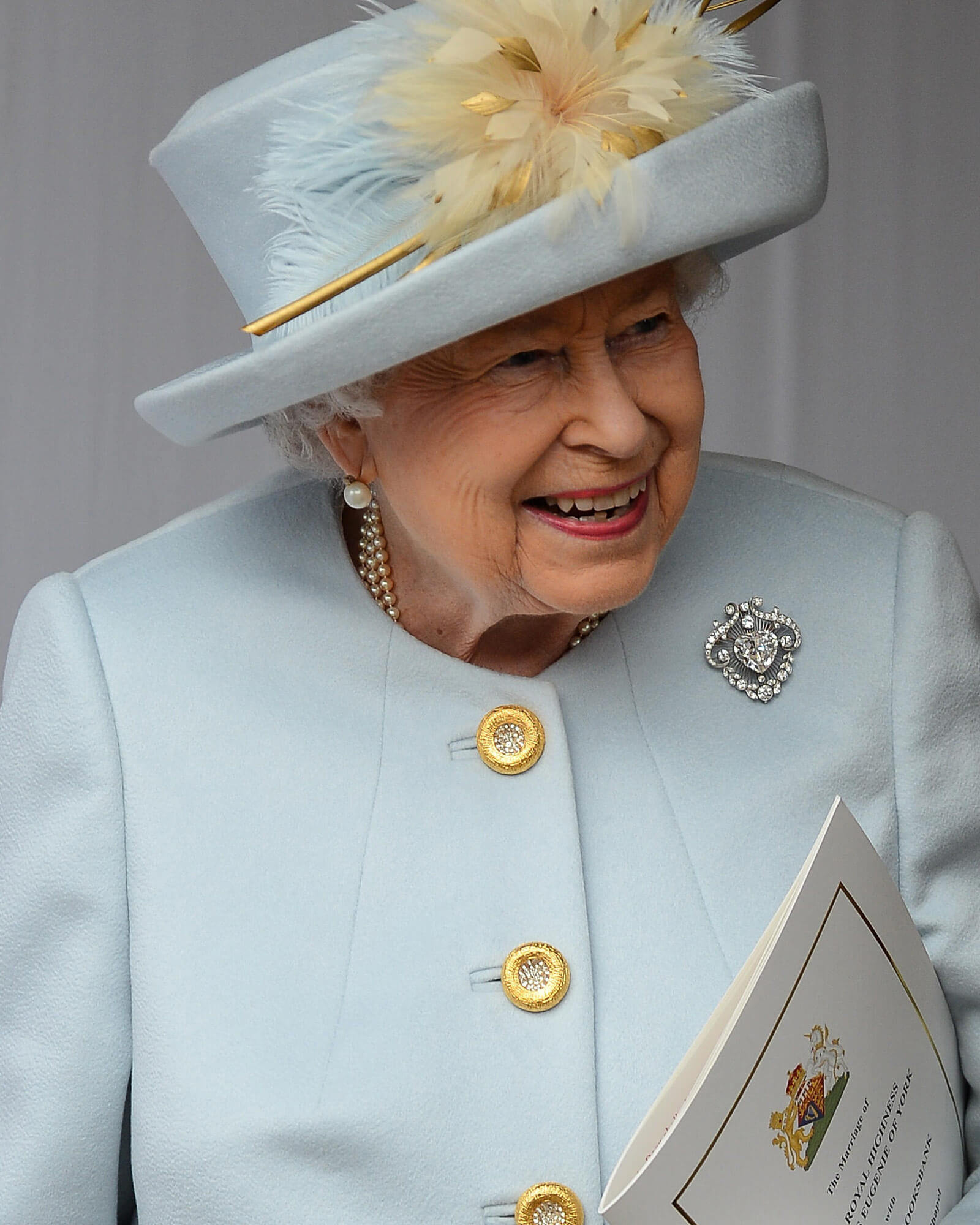
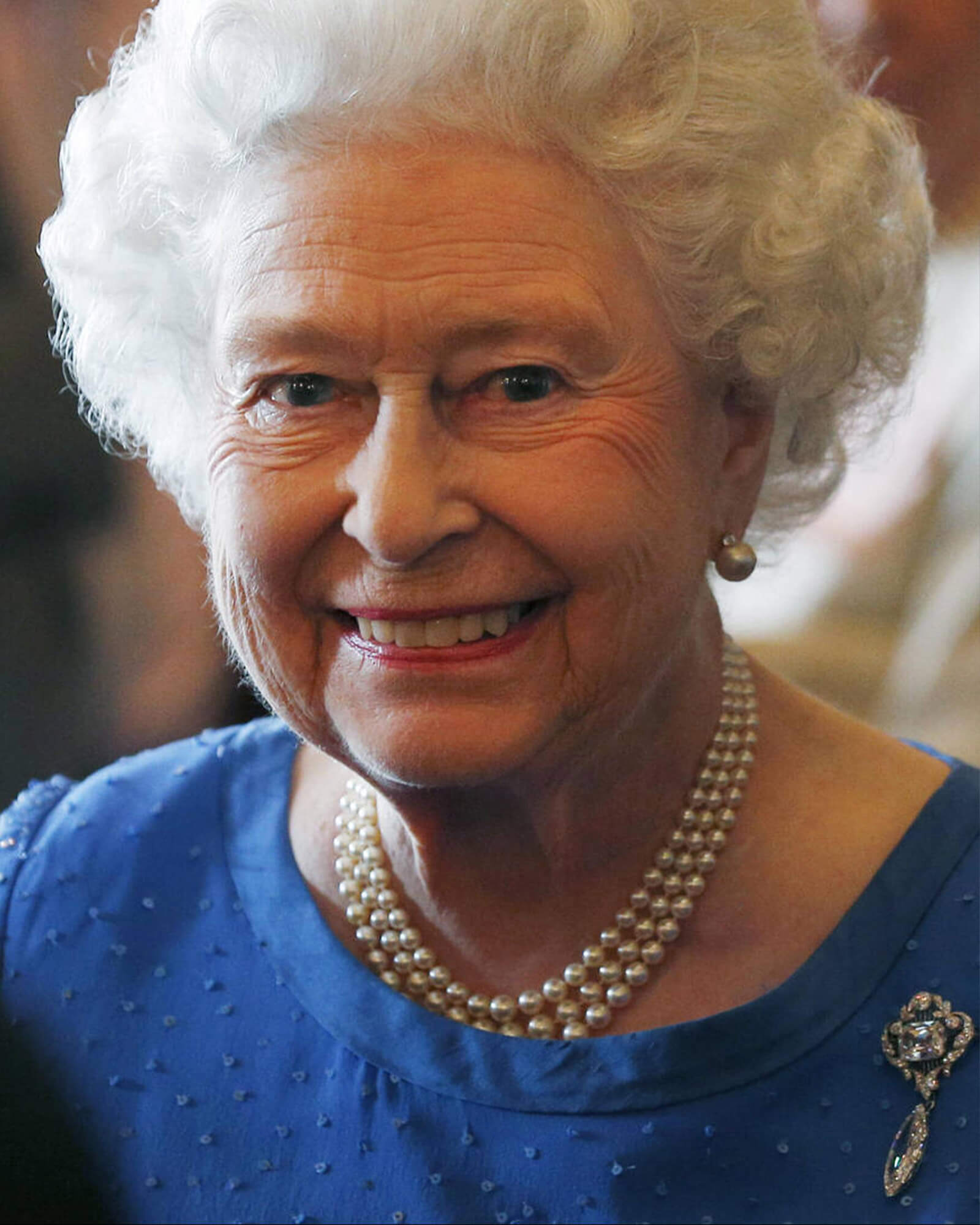
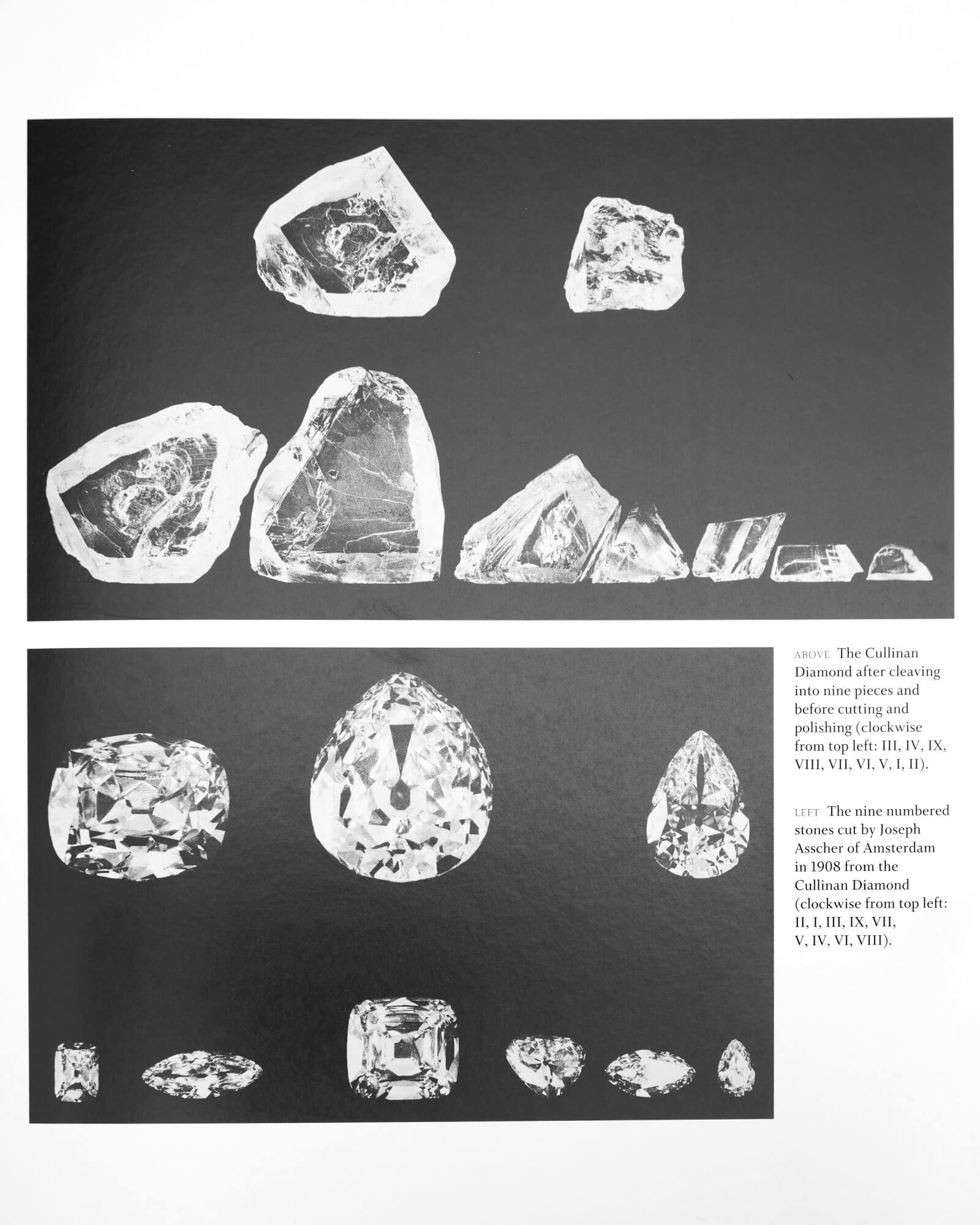
Commissioned by Queen Mary to wear in the stomacher of her Delhi Durbar Parure, the centre stone is the 18.80 carat heart shape Cullinan V diamond. Cut from the 3,106 carat Cullinan Diamond, the largest diamond ever discovered, Garrard designed the mount so that the Cullinan V can be detached and worn with other jewels, including the Cullinan VIII Brooch, below.
Among the nine large gems cut from the Cullinan Diamond, the 11.50 carat marquise cut Cullinan VI diamond was purchased by King Edward VII for Queen Alexandra in 1908, while the 6.80 carat emerald cut Cullinan VIII diamond was given to Queen Mary in 1910. This combination was favoured by Queen Elizabeth II, who wore the Cullinan VI as a pendant, suspended beneath the Cullinan VIII Brooch.
Made for Queen Mary, the Cullinan IX ring features a classic openwork 12 claw setting clasping the 4.40 carat Cullinan IX diamond – the smallest of the nine numbered stones cut from the great Cullinan Diamond.
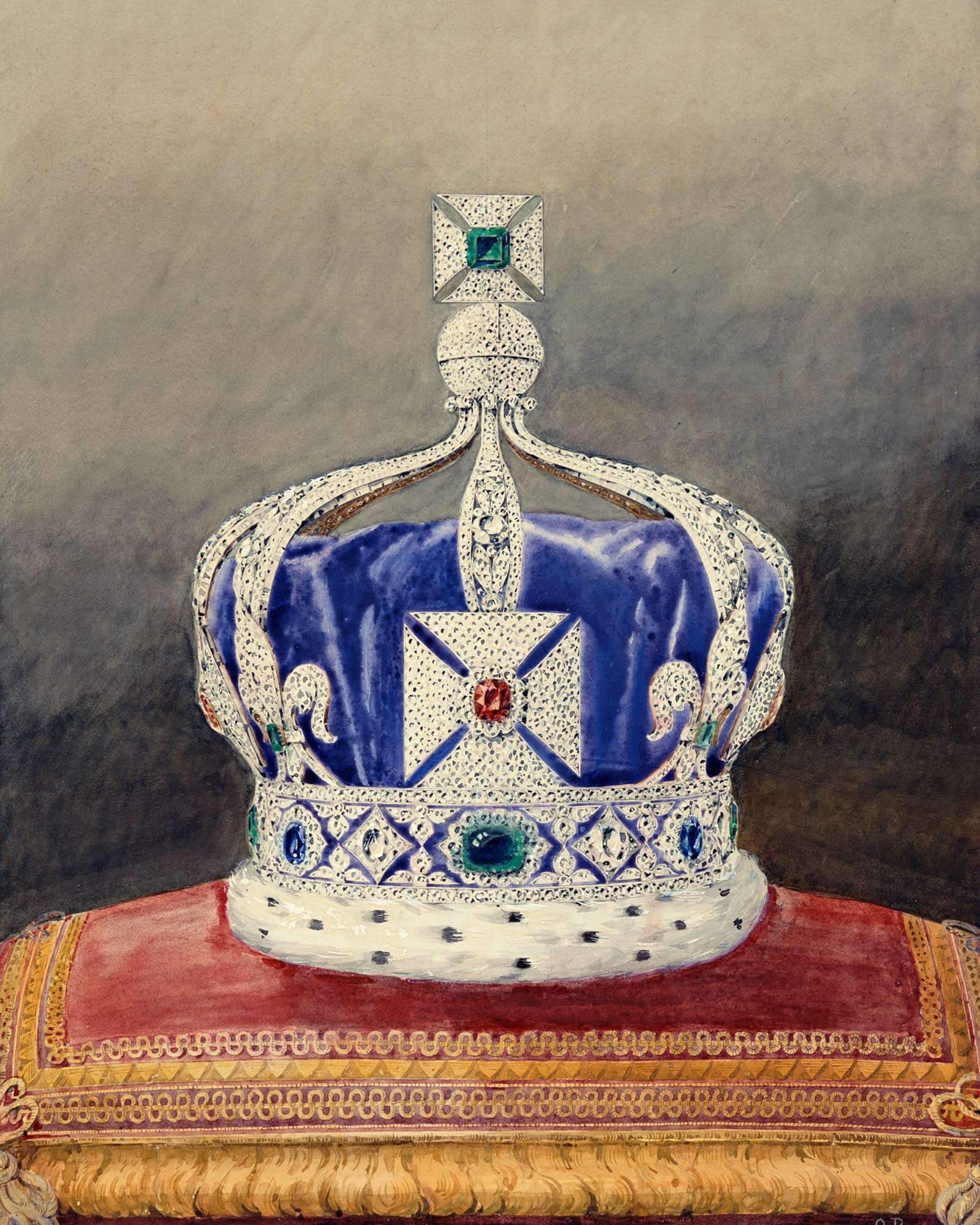
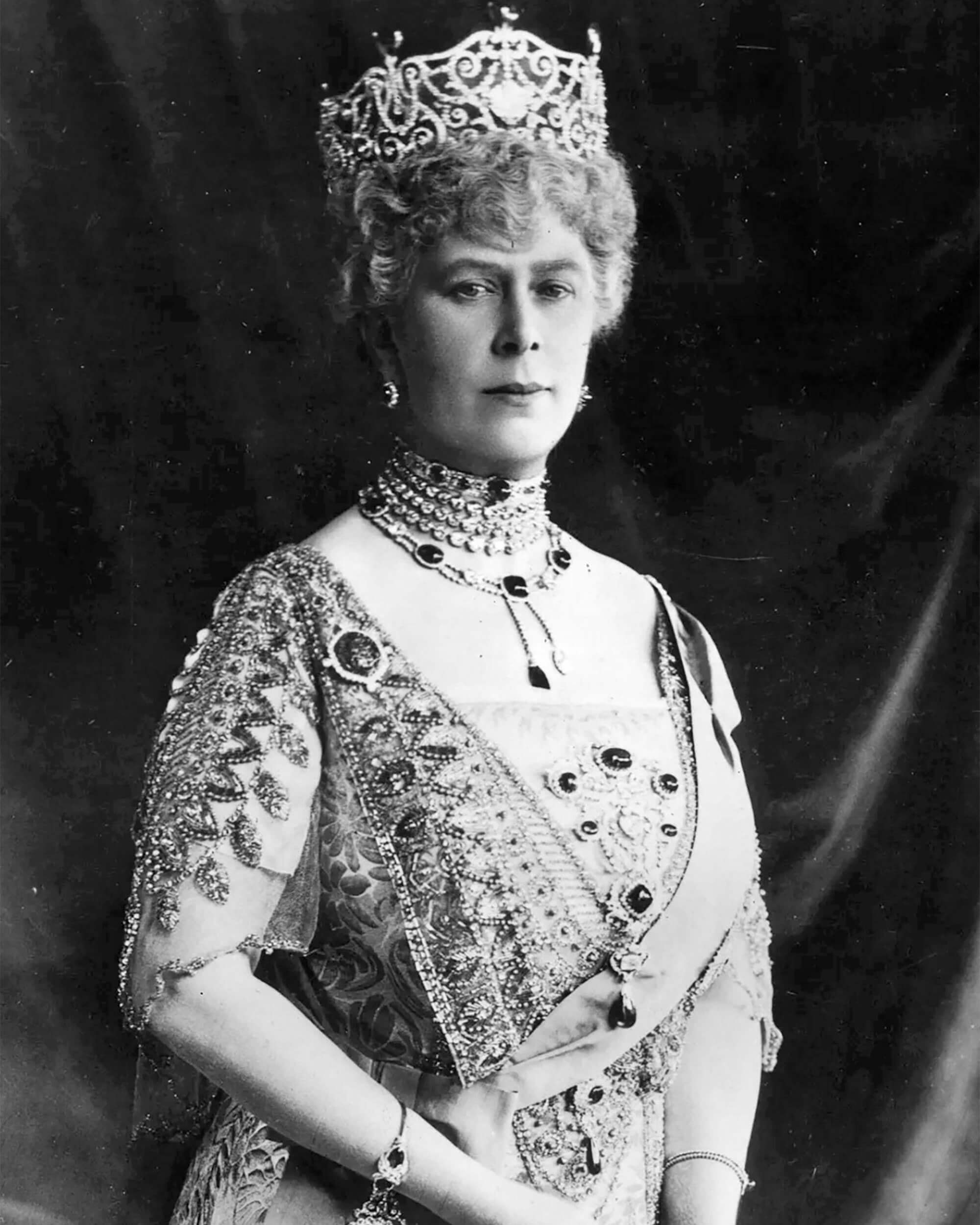
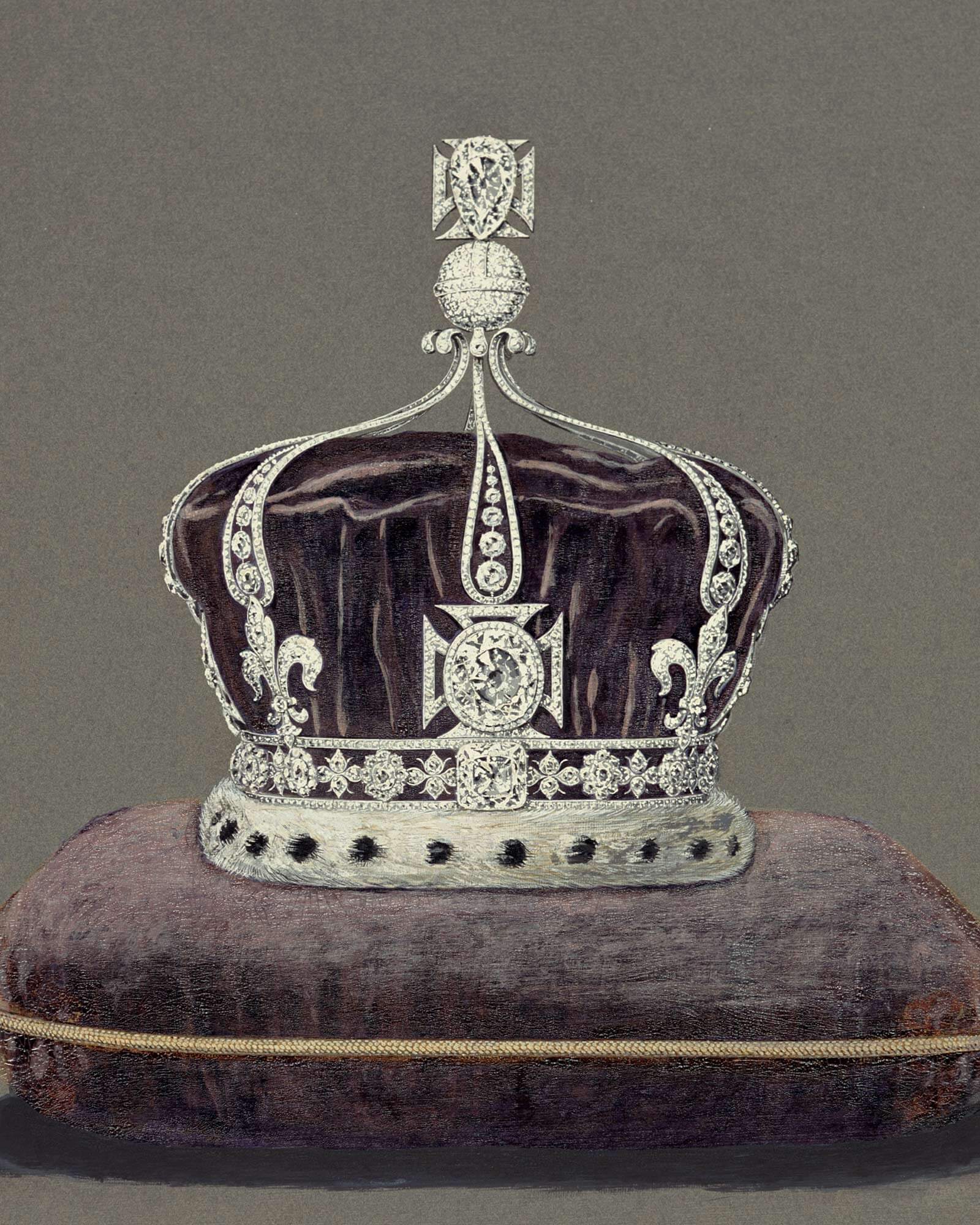
Set with 6,100 diamonds, the Imperial Crown of India was made for the crowning of King George V at the Delhi Durbar of 1911. Held to mark the coronation of King George V and Queen Mary as Emperor and Empress of India, one of Garrard’s directors accompanied the royal party to Delhi, anticipating any last-minute alterations.
Alongside King George V’s Imperial Crown of India, Garrard also created a spectacular suite of jewels for Queen Mary to wear for the Delhi Durbar: an emerald and diamond necklace, tiara, earrings, brooch and stomacher. The necklace showcased eight cabochon emeralds, known collectively as the Cambridge emeralds, with two removable pendants, one set with the marquise cut Cullinan VII diamond. Queen Elizabeth II inherited the Delhi Durbar Necklace in 1953 and was pictured wearing it on many occasions.
Set with three historic diamonds, the Koh-i-Noor and the Cullinan III and IV, Queen Mary commissioned this crown for the coronation of her husband, George V, in 1911. Inspired by Queen Alexandra’s Crown of 1902, the eight arches can be removed, transforming it into a circlet, which is how Queen Mary wore it at the coronation of her son, King George VI, in 1937. In 2023, Queen Camilla was crowned with Queen Mary’s Consort Crown. The first time in recent history that an existing crown has been used for the coronation of a Queen Consort, the controversial Koh-i-Noor was removed for the occasion.
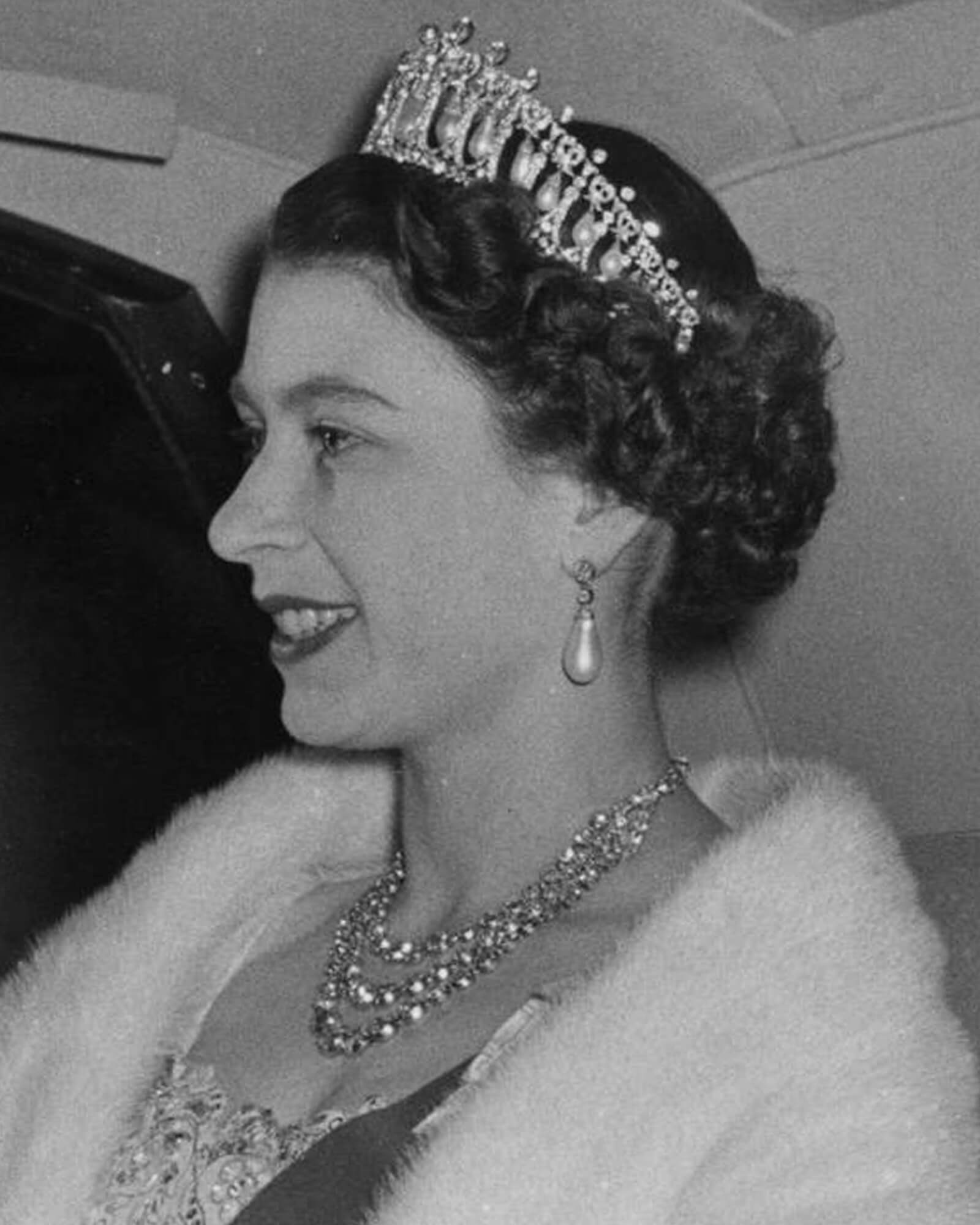
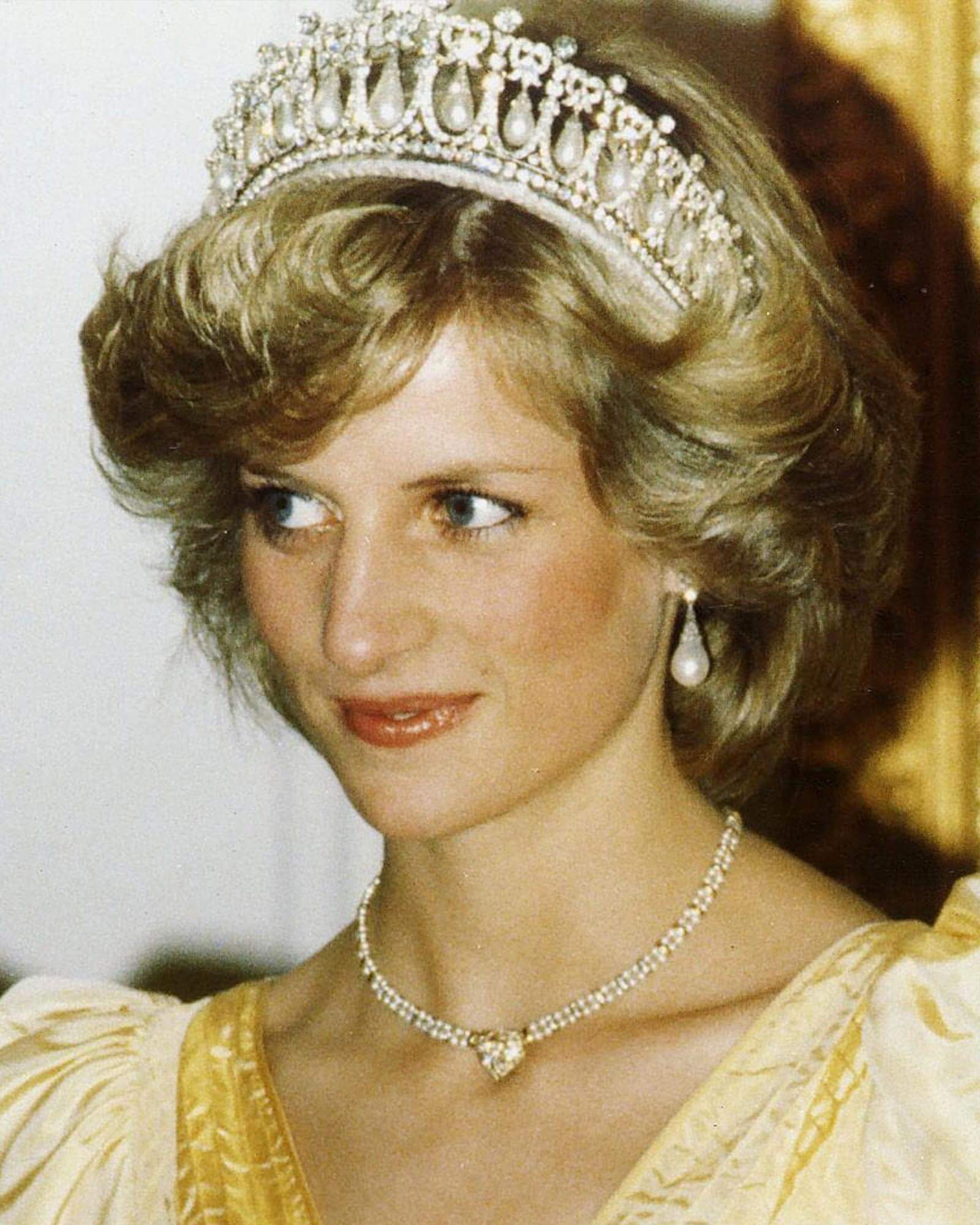
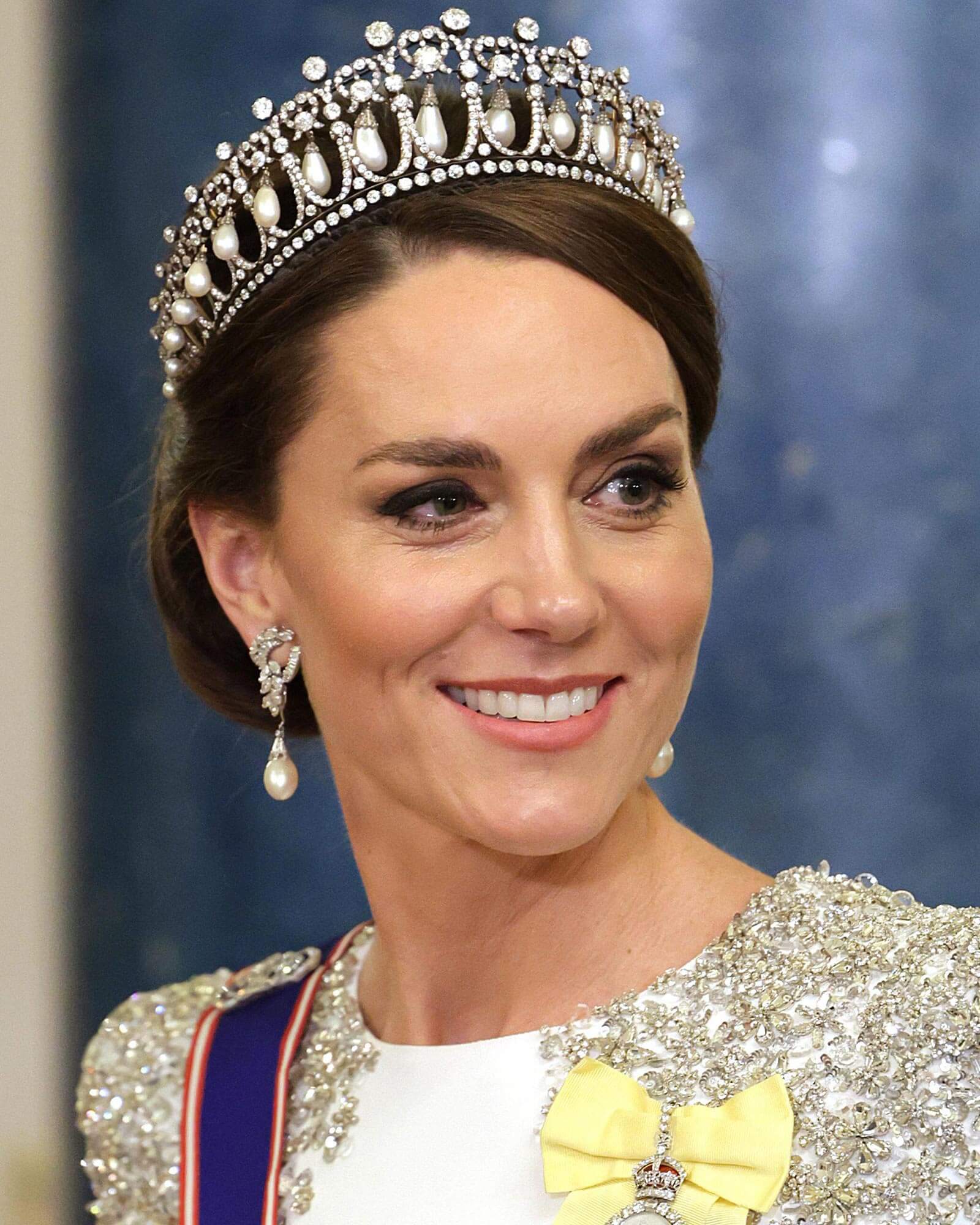
With no beginning and no end, the lover’s knot motif sweeps around this diamond and pearl tiara, created for Queen Mary. The most recognised pearl tiara in the Royal Collection, it was inherited by Queen Elizabeth II, who wore it regularly before loaning it to her new daughter-in-law Princess Diana in 1981, for whom it became a signature piece. More recently, a new generation of royals has been spotted in this iconic jewel, with Catherine, Princess of Wales wearing it regularly on state occasions.
Made at the request of Queen Mary, the Fringe Tiara is formed of alternating bars and spikes of diamonds. Like other convertible royal tiaras crafted by Garrard, it can also be worn as a necklace. Queen Mary gifted the tiara to Queen Elizabeth The Queen Mother in 1936, who loaned it to her daughter, the future Queen Elizabeth II, to wear on her wedding day. It has since been worn at the weddings of Princess Anne in 1973 and Princess Beatrice in 2020.
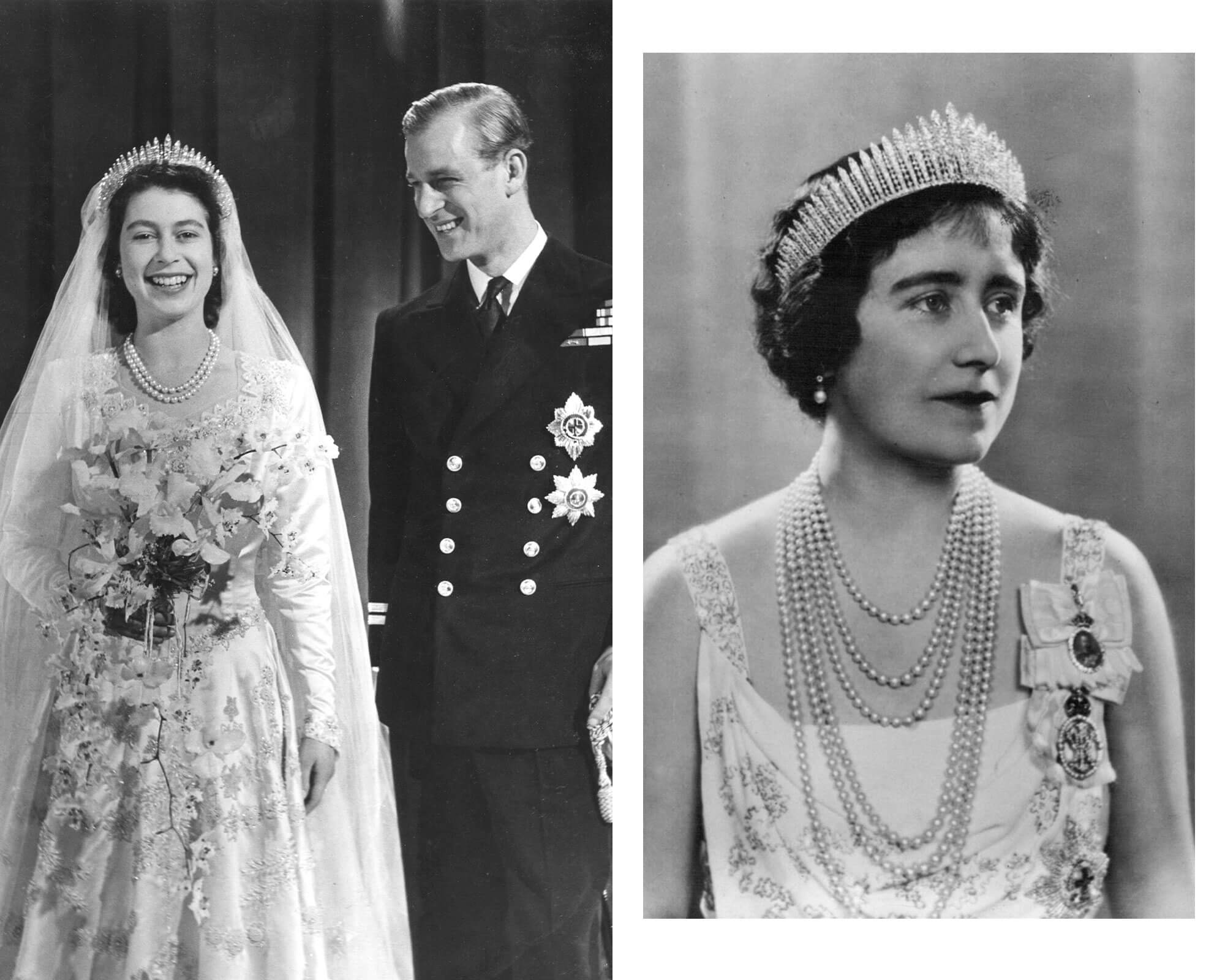
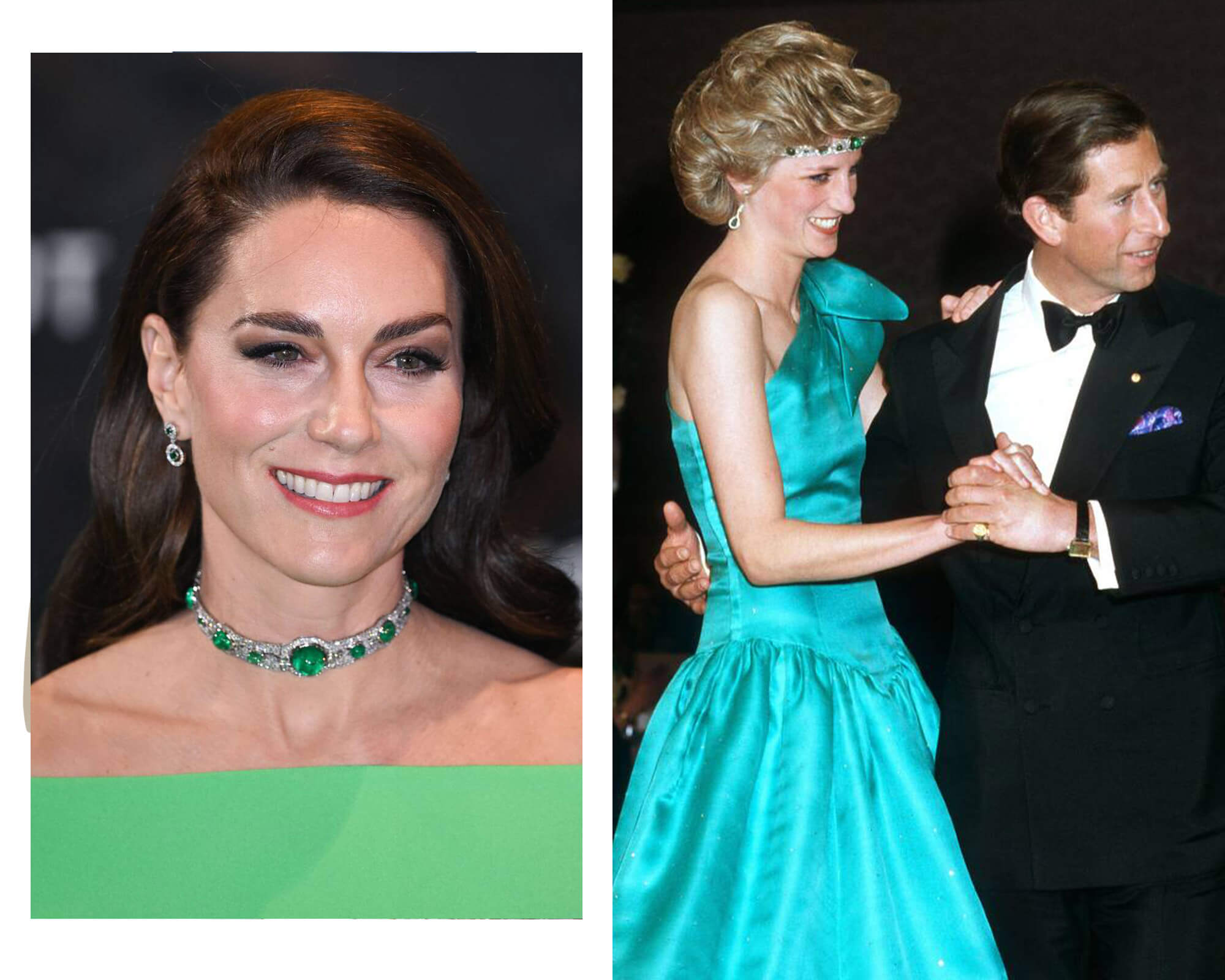
The emeralds in Queen Mary’s Art Deco choker were a gift from the Ladies of India. Inherited by Queen Elizabeth II, who gave it to Princess Diana as a wedding gift, Diana famously transformed the choker into a jewelled headband for a ball in Melbourne during a Tour of Australia with His Majesty King Charles III, then the Prince of Wales. In December 2022, Catherine, Princess of Wales wore the choker to the Earthshot Prize Awards, which were founded by her husband Prince William.

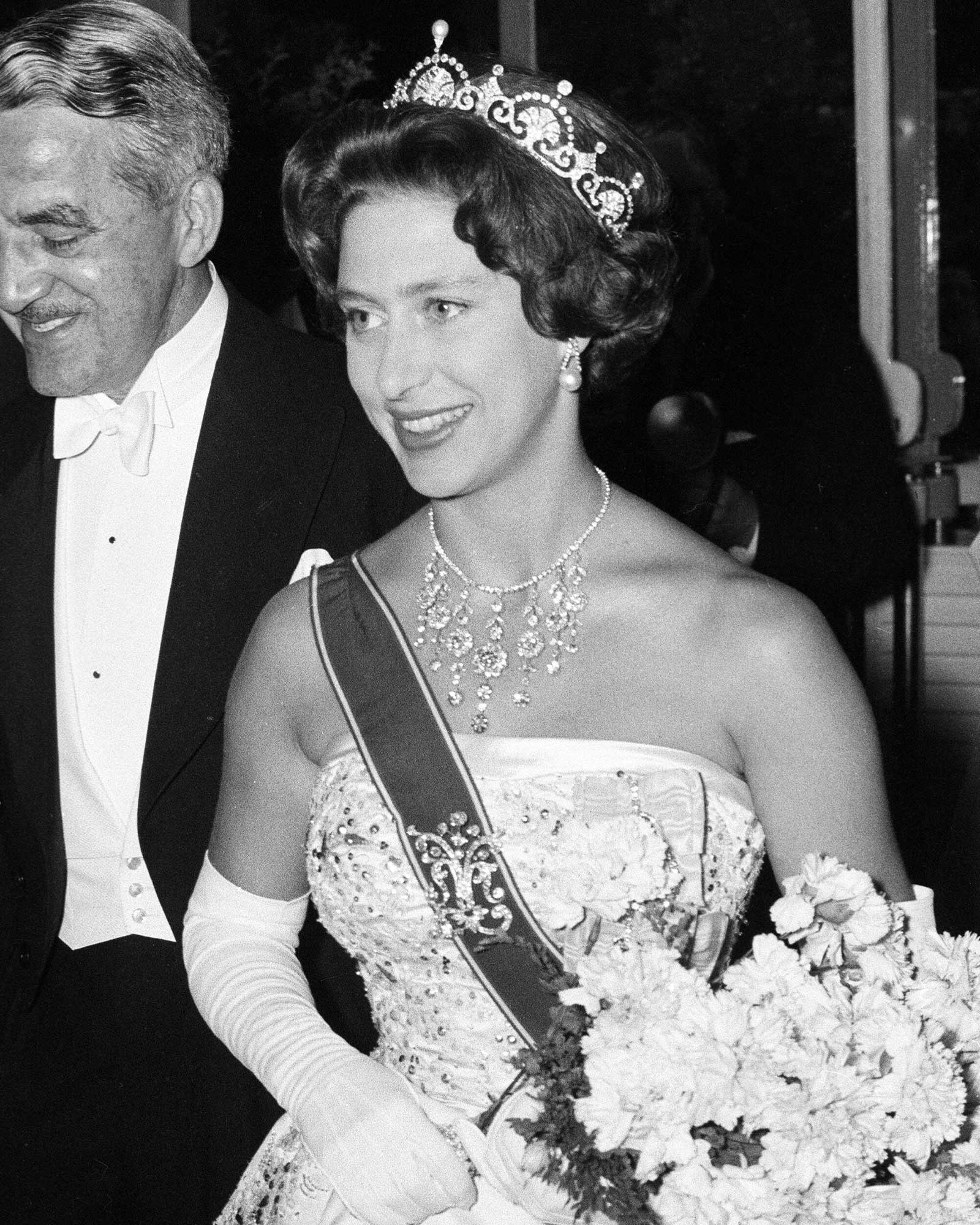


Among the most romantic of the royal jewels crafted by Garrard for the British Royal Family, the Lotus Flower Tiara perfectly embodies the era in which it was made. Created in 1923 for Queen Elizabeth The Queen Mother during the early years of her marriage to King George VI, the exquisite design draws inspiration from Egyptian iconography. Today, it is one of a suite of tiaras worn by Catherine, Princess of Wales on formal occasions.
The Diamond Bandeau Tiara was designed to accommodate the County of Lincoln Brooch in the centre – a gift to Mary from the County of Lincoln in 1893 when she married the future King George V. Bequeathed to Queen Elizabeth II in 1953, Meghan Markle walked down the aisle wearing the tiara when she married Prince Harry in 2018.
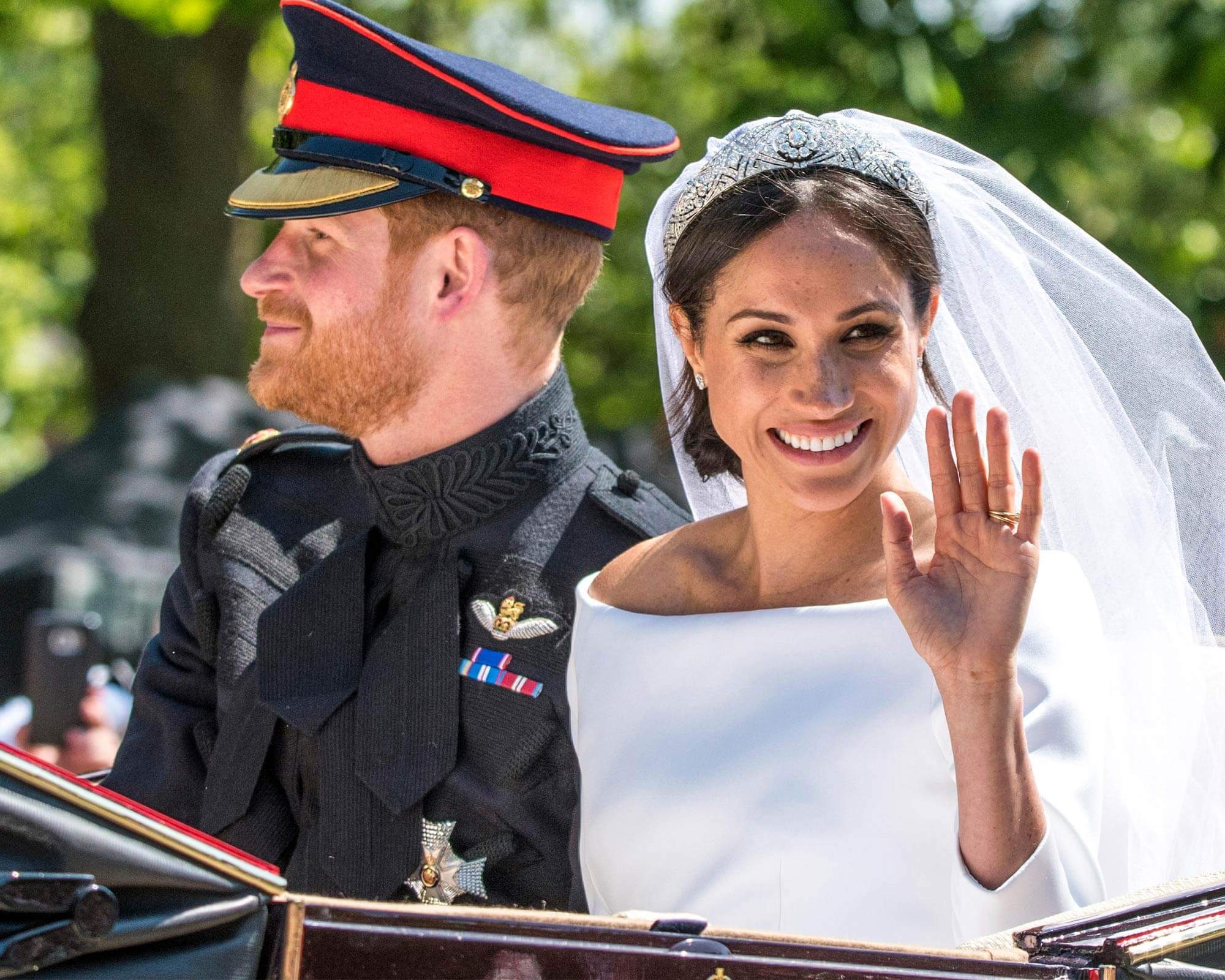
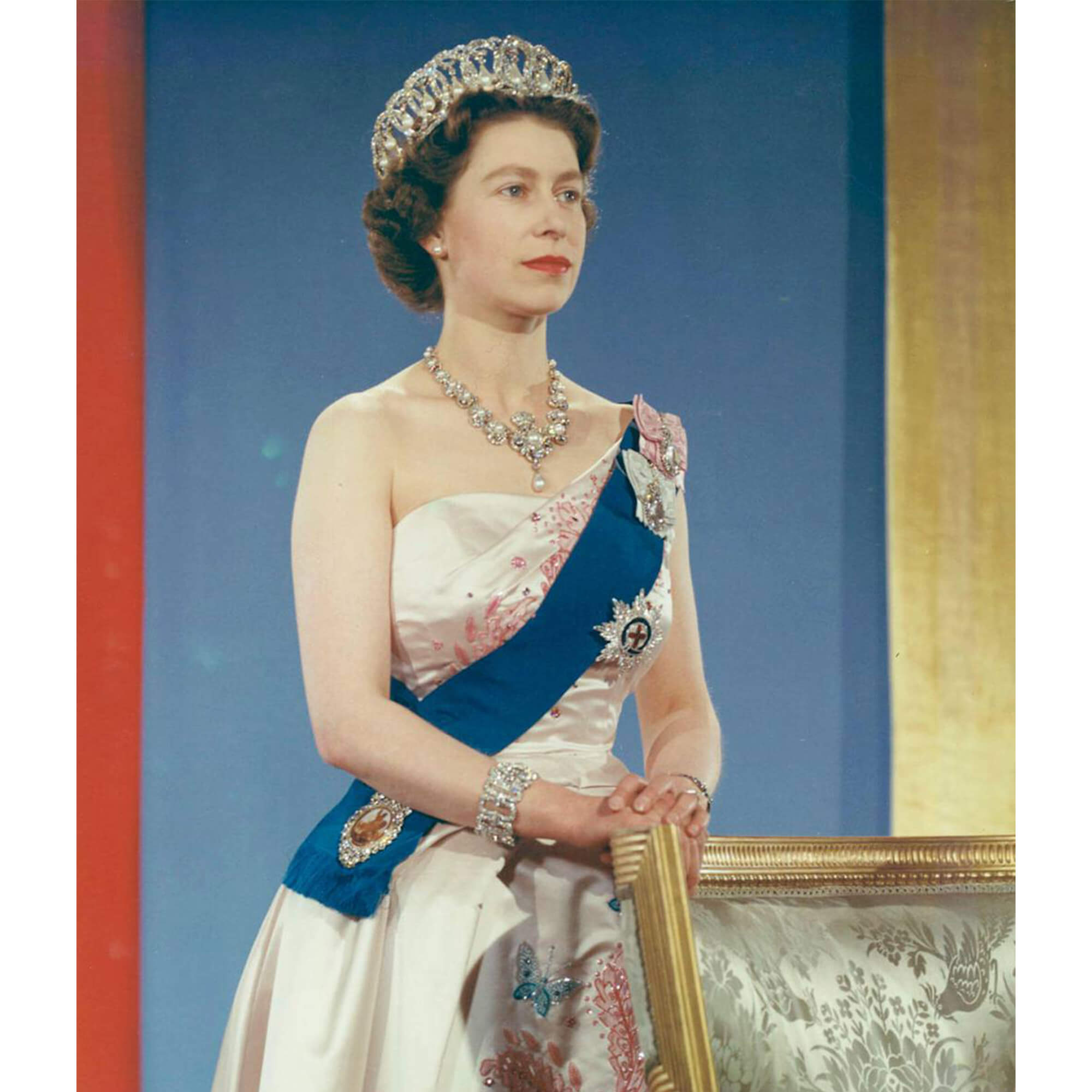
Queen Mary purchased the first diamond chain link bracelet from Garrard in 1932, with the second made at the Queen’s request three years later. The innovative design meant that the two could be joined together and worn as a choker.

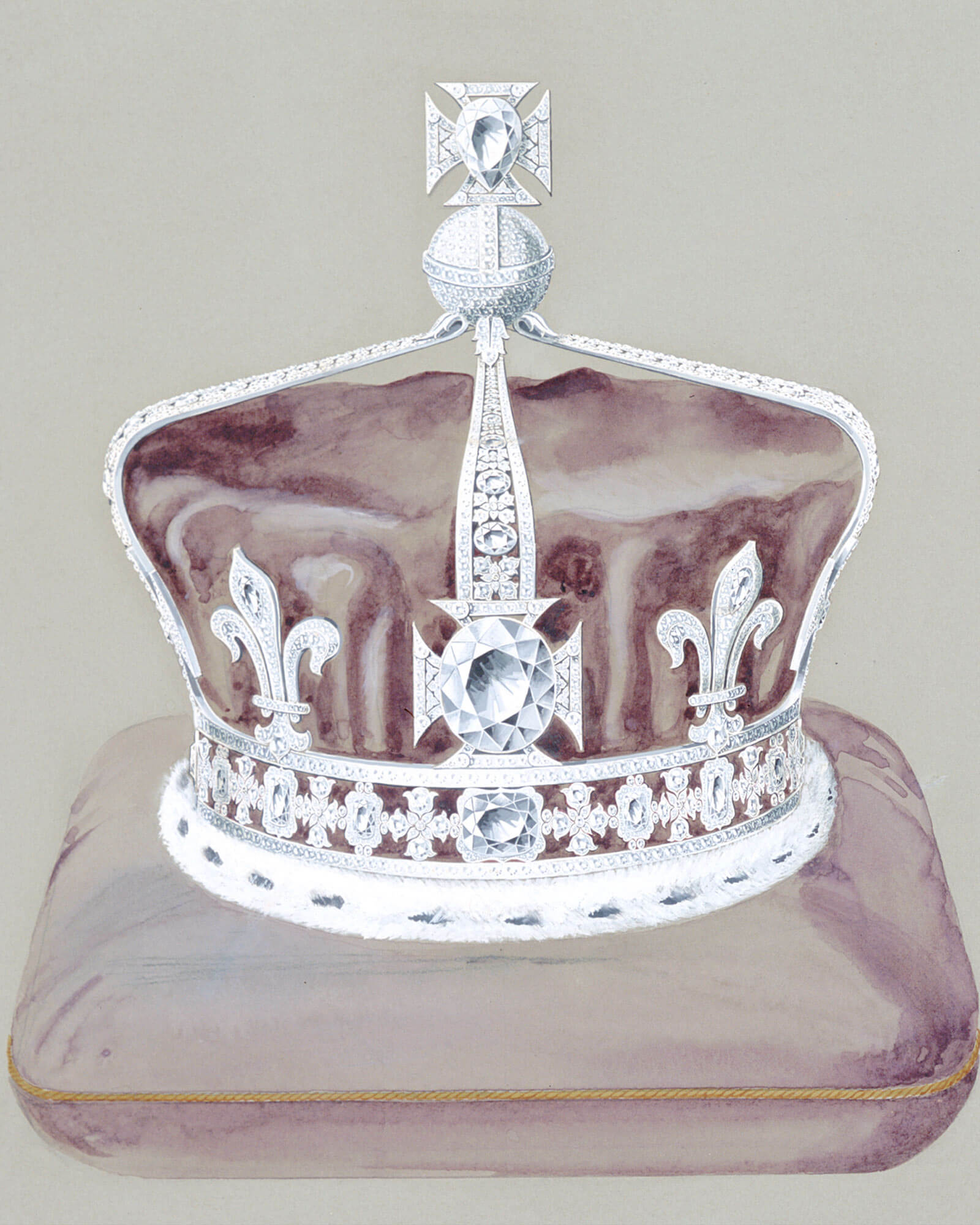
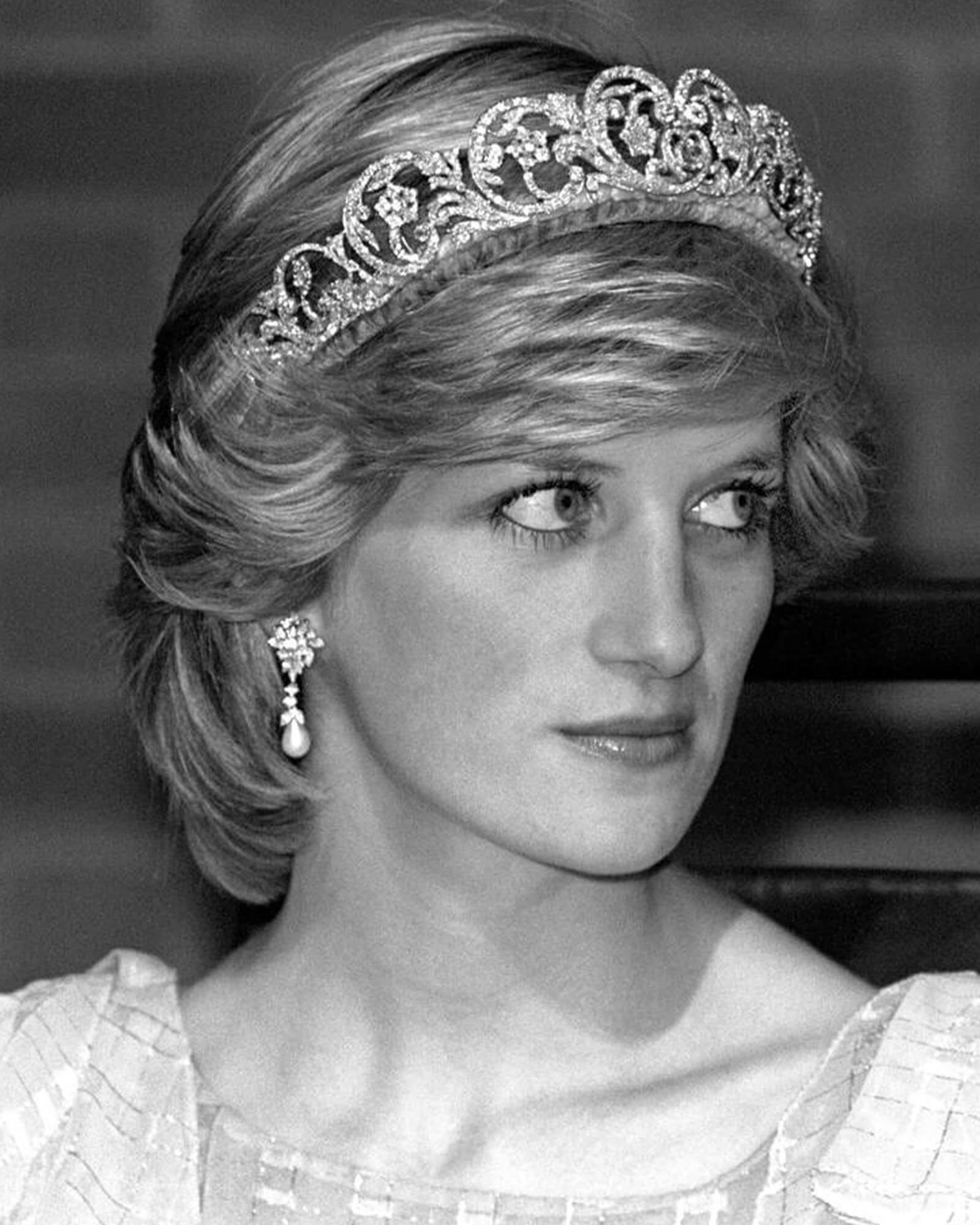
Used at the coronation of King Charles III in 2023, the Imperial State Crown was made by Garrard for the coronation of his grandfather, George VI, in 1937 and subsequently used to crown his mother, Queen Elizabeth II, in 1953. It is set with some of the most famous stones in the Royal Collection, including the Cullinan II diamond, the Stuart Sapphire, the Black Prince’s Ruby and St Edward’s Sapphire, said to have been worn in a ring by Edward the Confessor.
Made by Garrard for Queen Elizabeth The Queen Mother to wear to the coronation of her husband, King George VI, many of the diamonds were repurposed from Queen Victoria’s Regal Circlet. The Koh-i-Noor, history’s most famous – and controversial – diamond, was set in a cross at the front of the crown.
The arrival of a new Queen Consort saw the entrance a new Lady of the Bedchamber for Queen Elizabeth The Queen Mother: Cynthia Spencer, wife of the 7th Earl Spencer. The Spencer Tiara was crafted for her to wear to royal events. Inherited by her son John, the 8th Earl Spencer and Princess Diana’s father, Princess Diana wore the tiara on multiple occasions, including in 1981 for her wedding to King Charles III, then Prince of Wales.
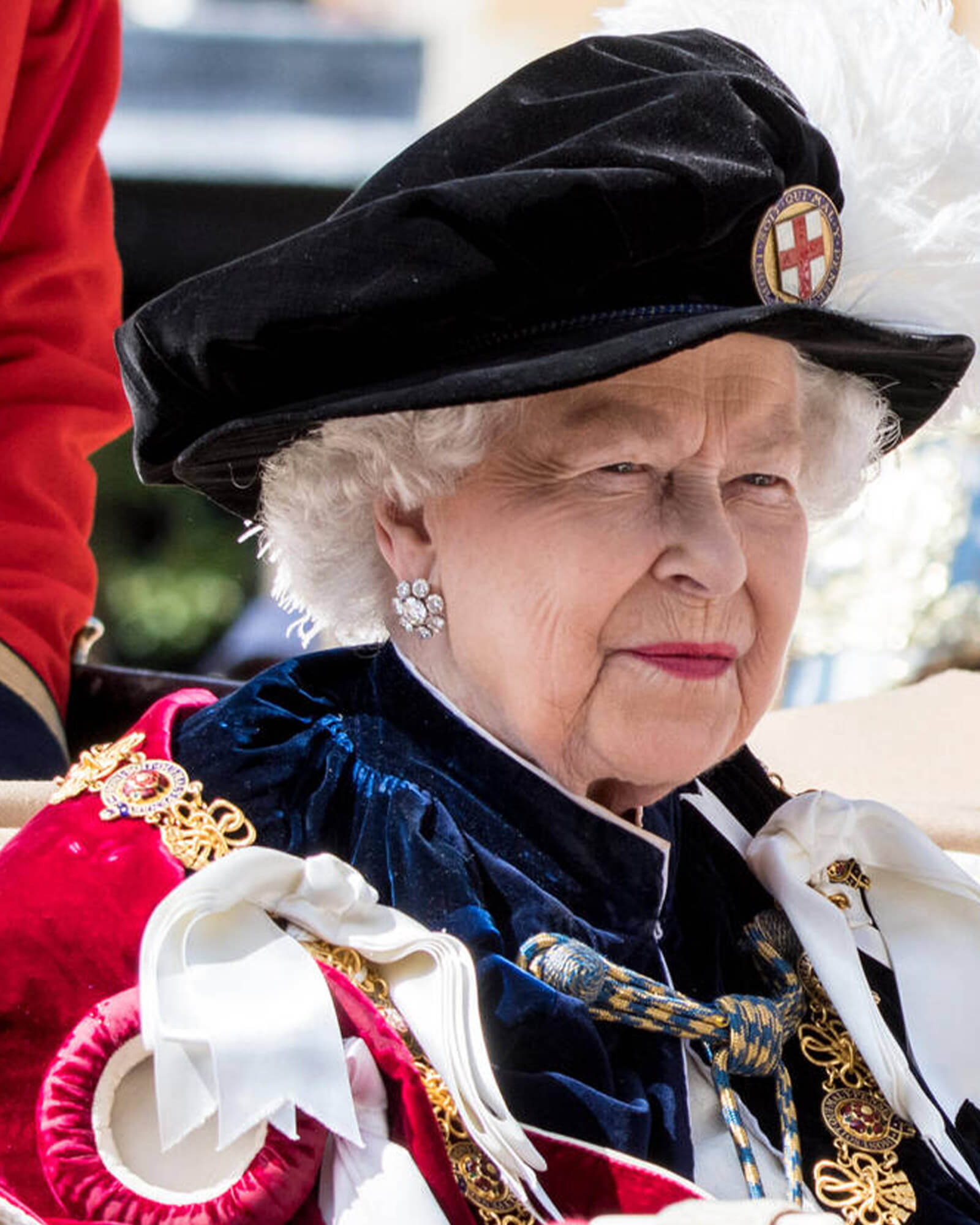
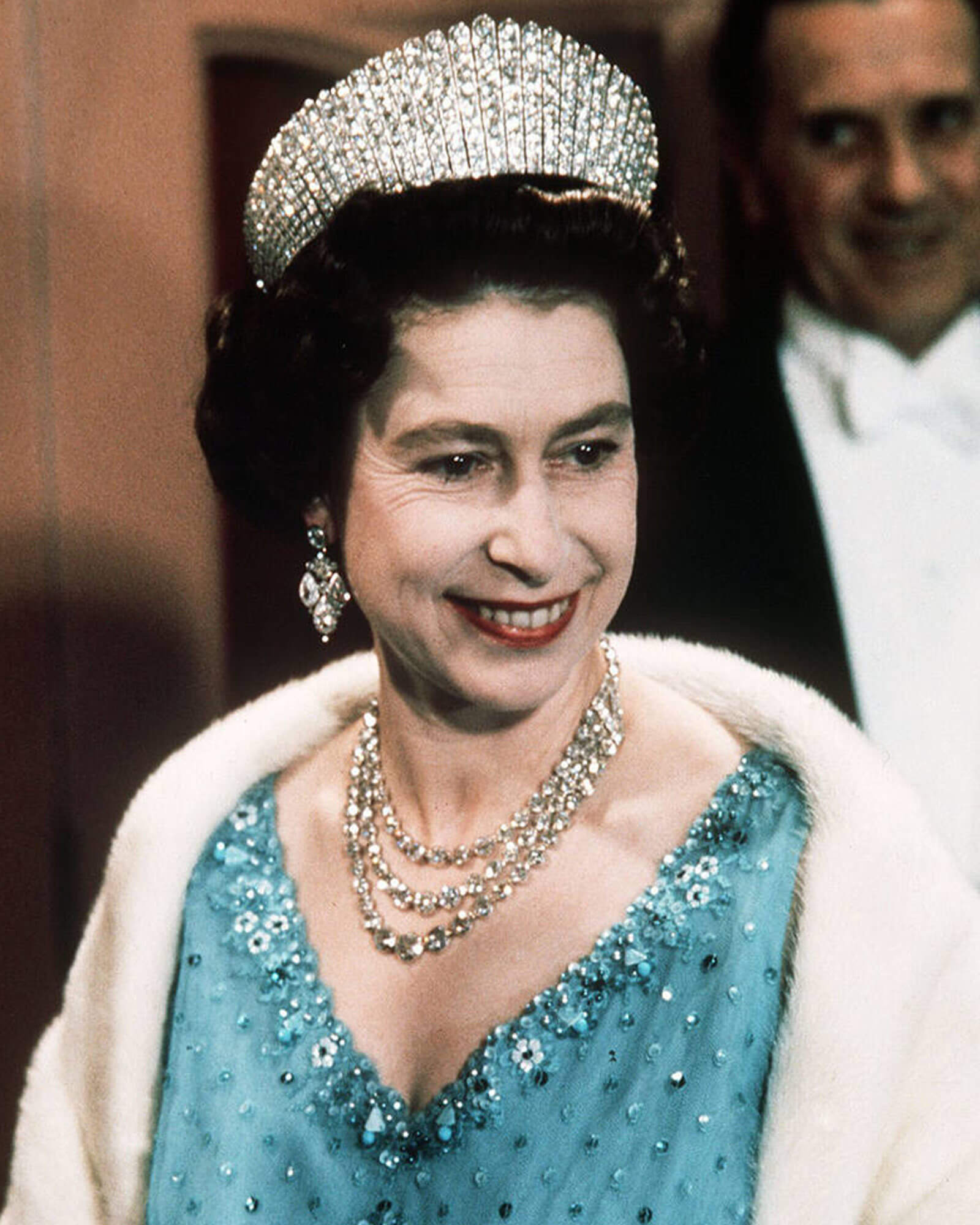
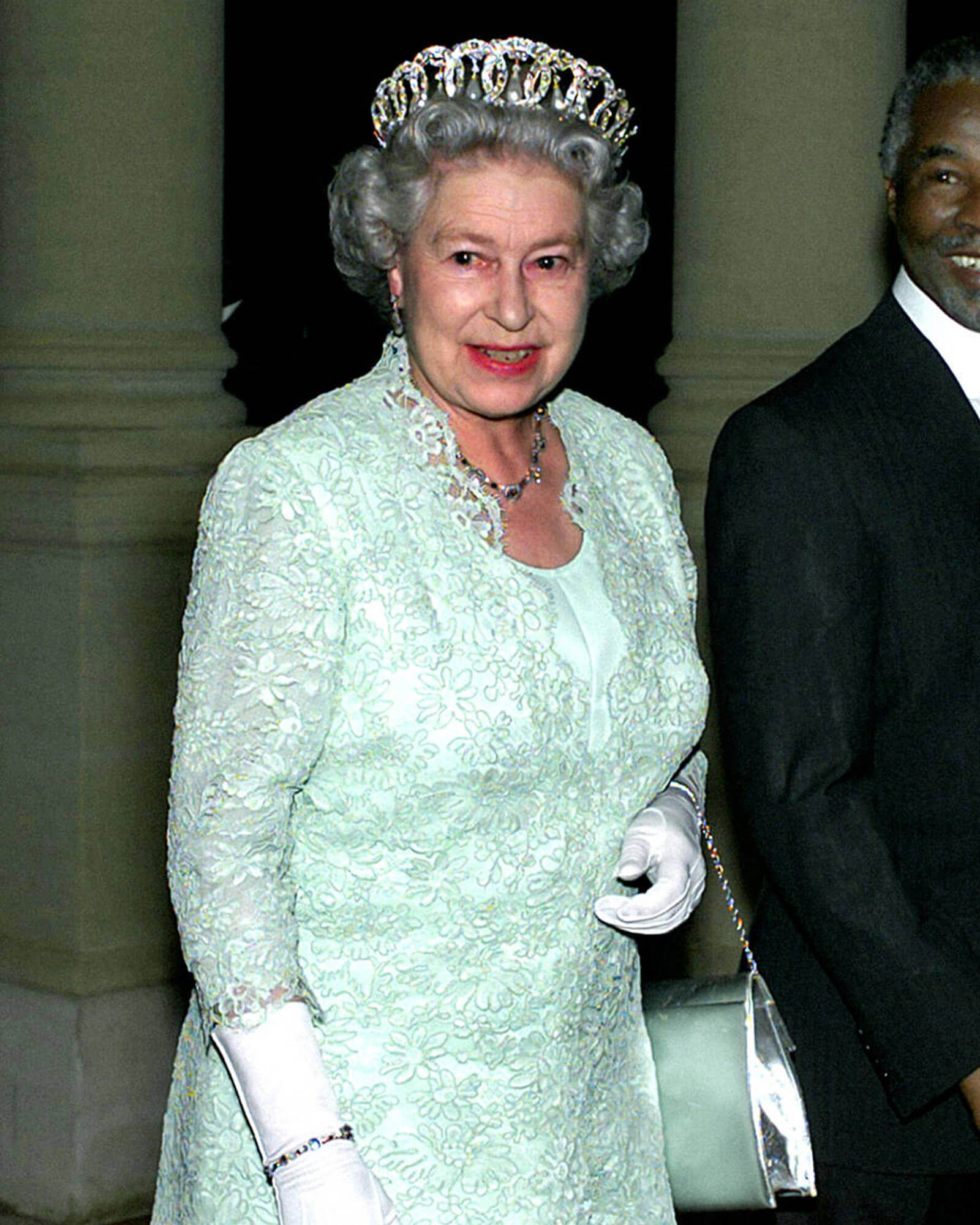
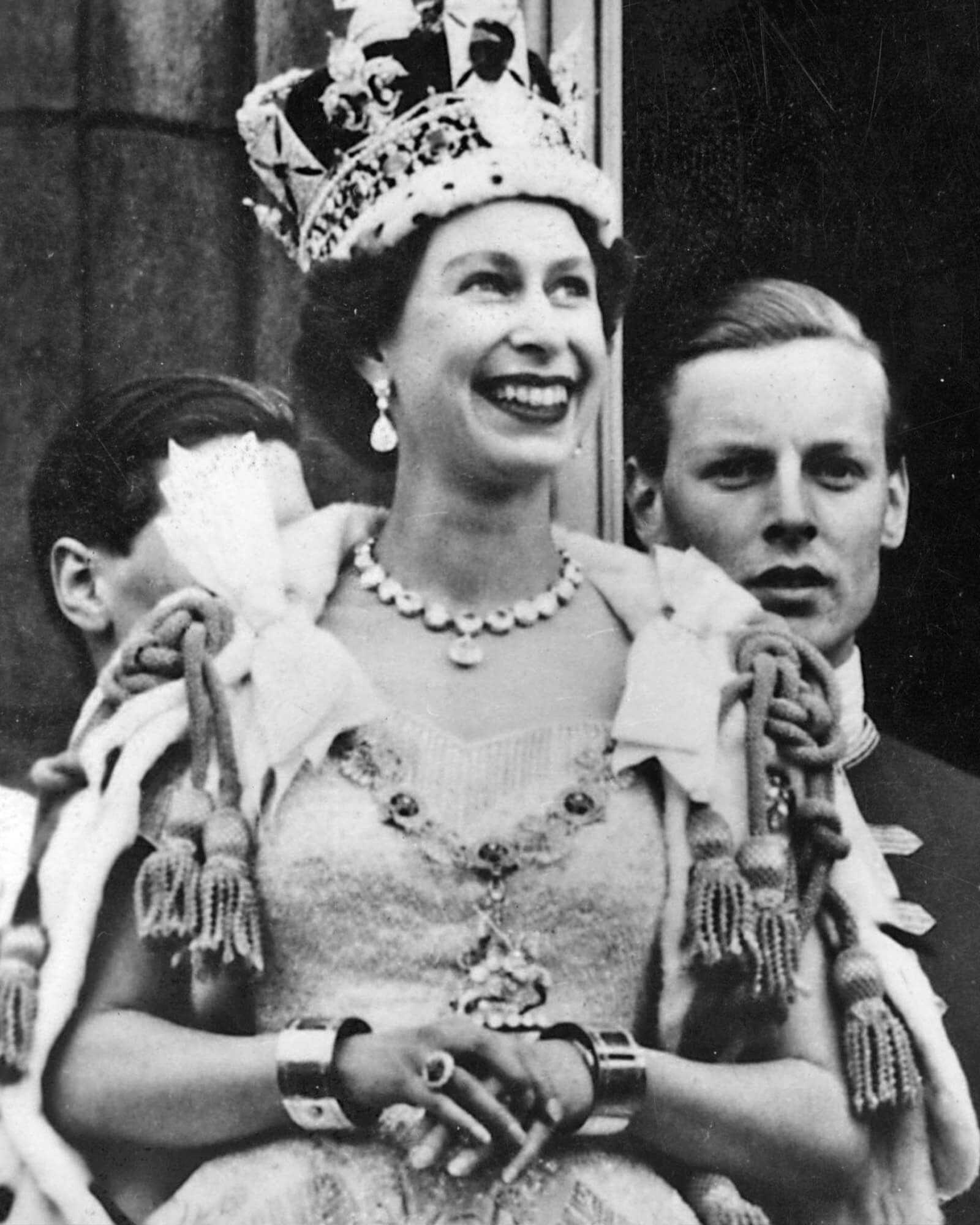
Queen Elizabeth II commissioned Garrard to create the Brazilian Aquamarine Tiara to wear with her aquamarine necklace and earrings – a coronation gift from the President of Brazil. The tiara was later modified by Garrard, with four fan-shaped motifs and the large aquamarine pendant of the necklace removed and reset at the front of the tiara.
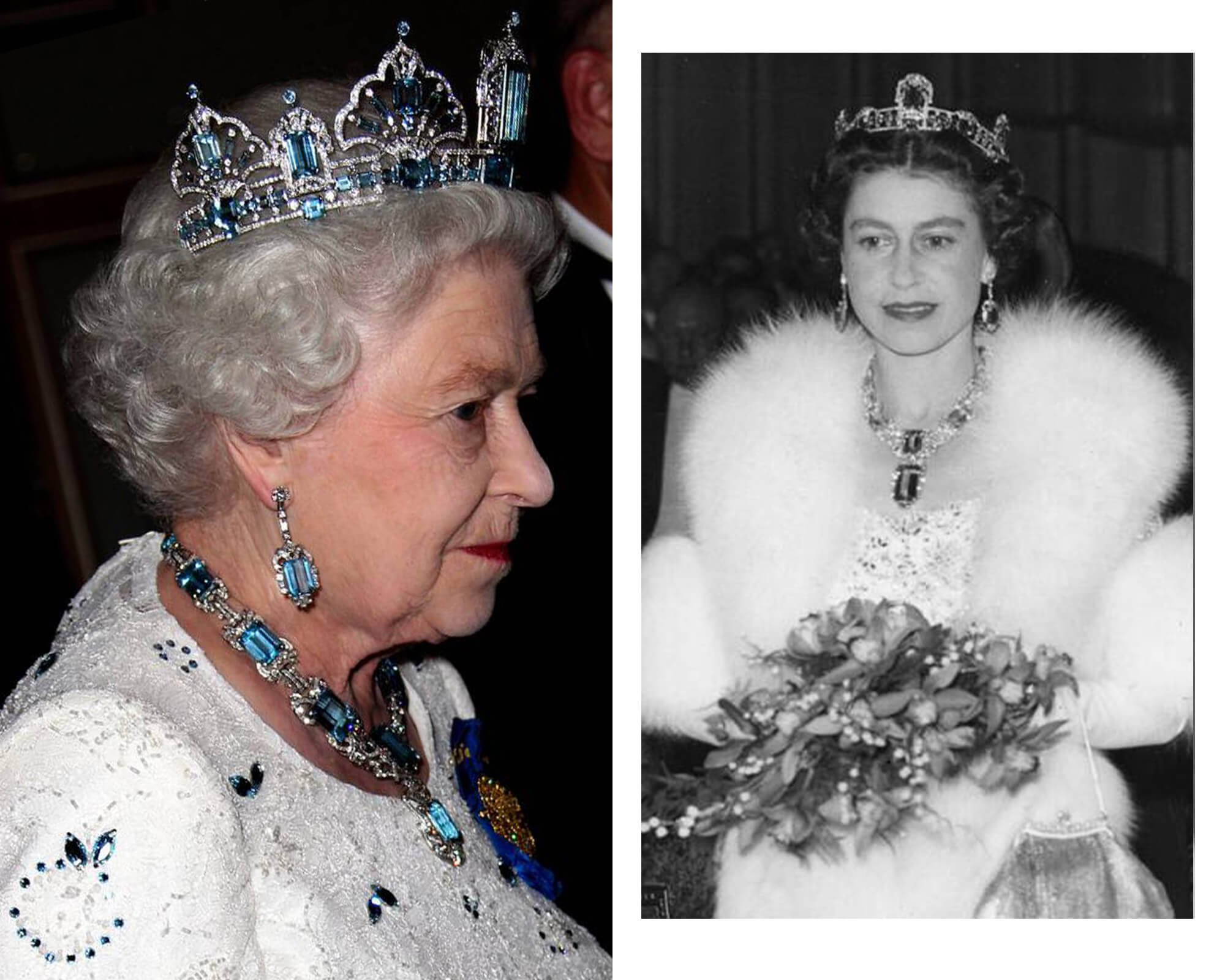
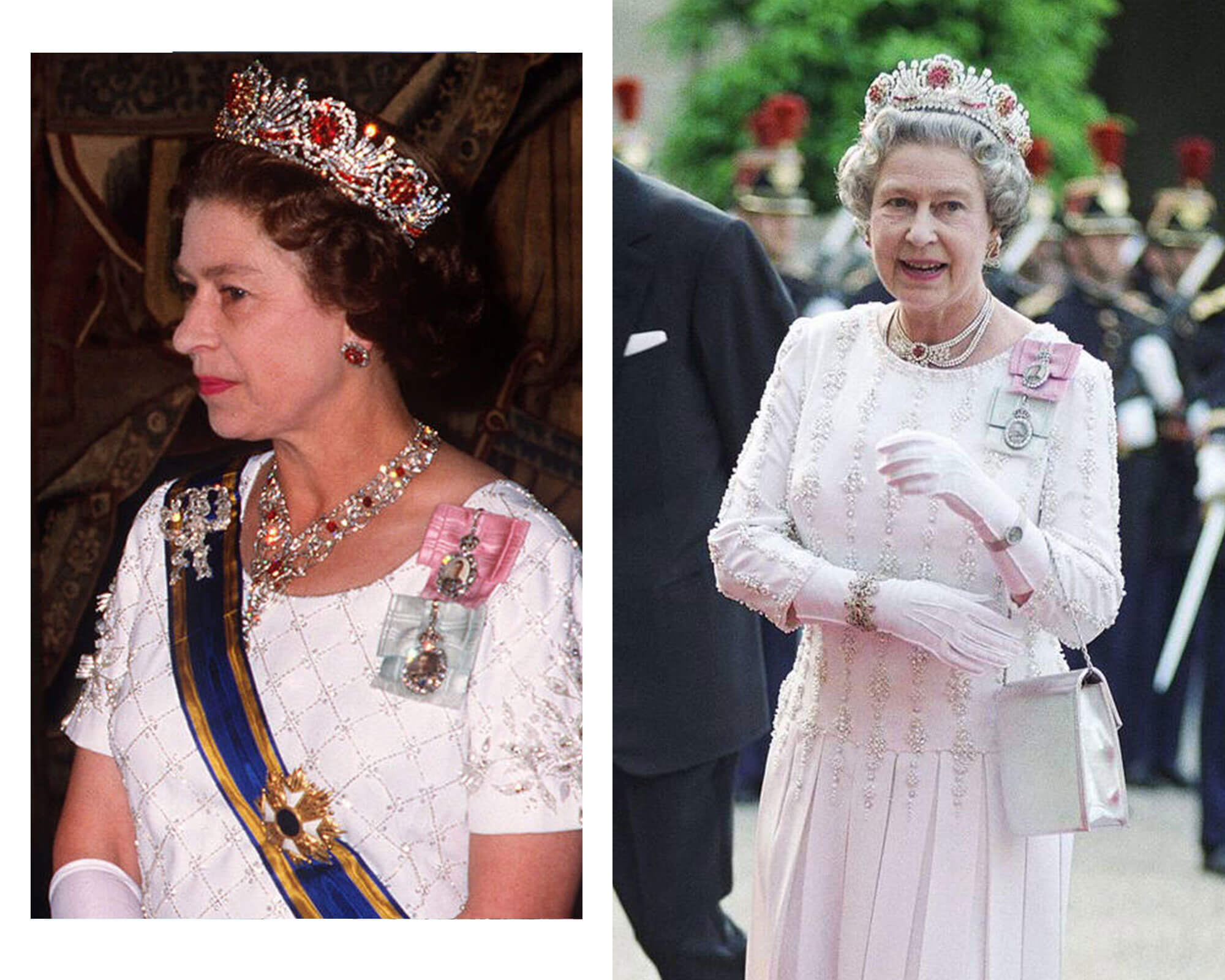
The Burmese Ruby tiara was commissioned by Queen Elizabeth II with instructions to incorporate a collection of 96 Burmese rubies – a wedding gift from the people of Burma. The rubies and diamonds are set in a series of rose motifs inspired by the Tudor Rose, the heraldic symbol of Britain and the inspiration for our Tudor Rose collection. The tiara was worn by Queen Camilla at a state banquet in 2023.
In 1980, Queen Elizabeth II commissioned Garrard to create a pearl and diamond necklace. Using freshwater pearls from her collection, gifted to the Queen by the Japanese government during a state visit in 1975, a four-strand choker was proposed, with the pearls united by a curved diamond clasp. In 1982, the Queen loaned the choker to Diana, Princess of Wales, who famously wore it to a banquet at Hampton Court Palace, paired with Queen Mary’s Lover’s Knot Tiara. More recently, Catherine, Princess of Wales, has worn the elegant piece on several occasions.
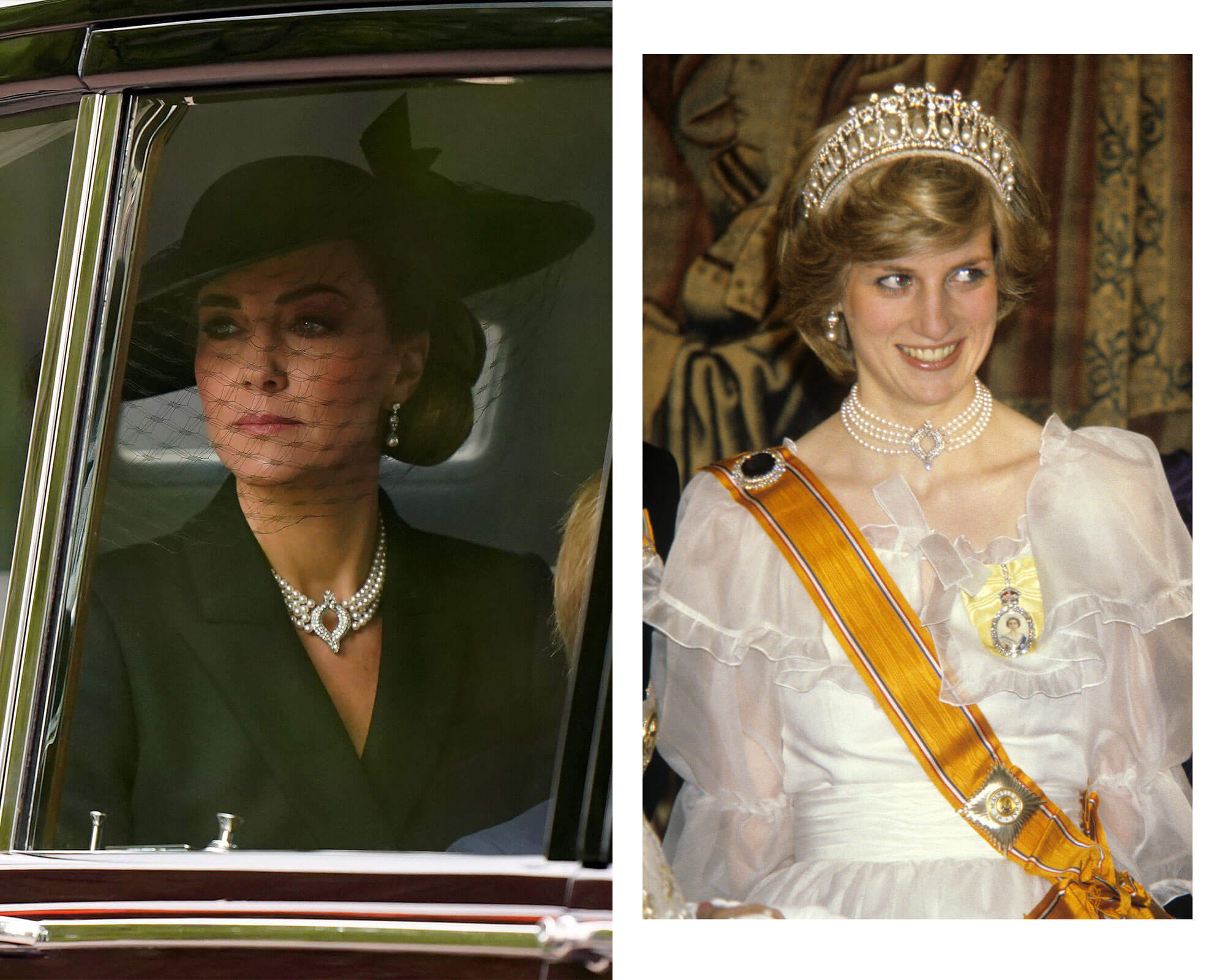
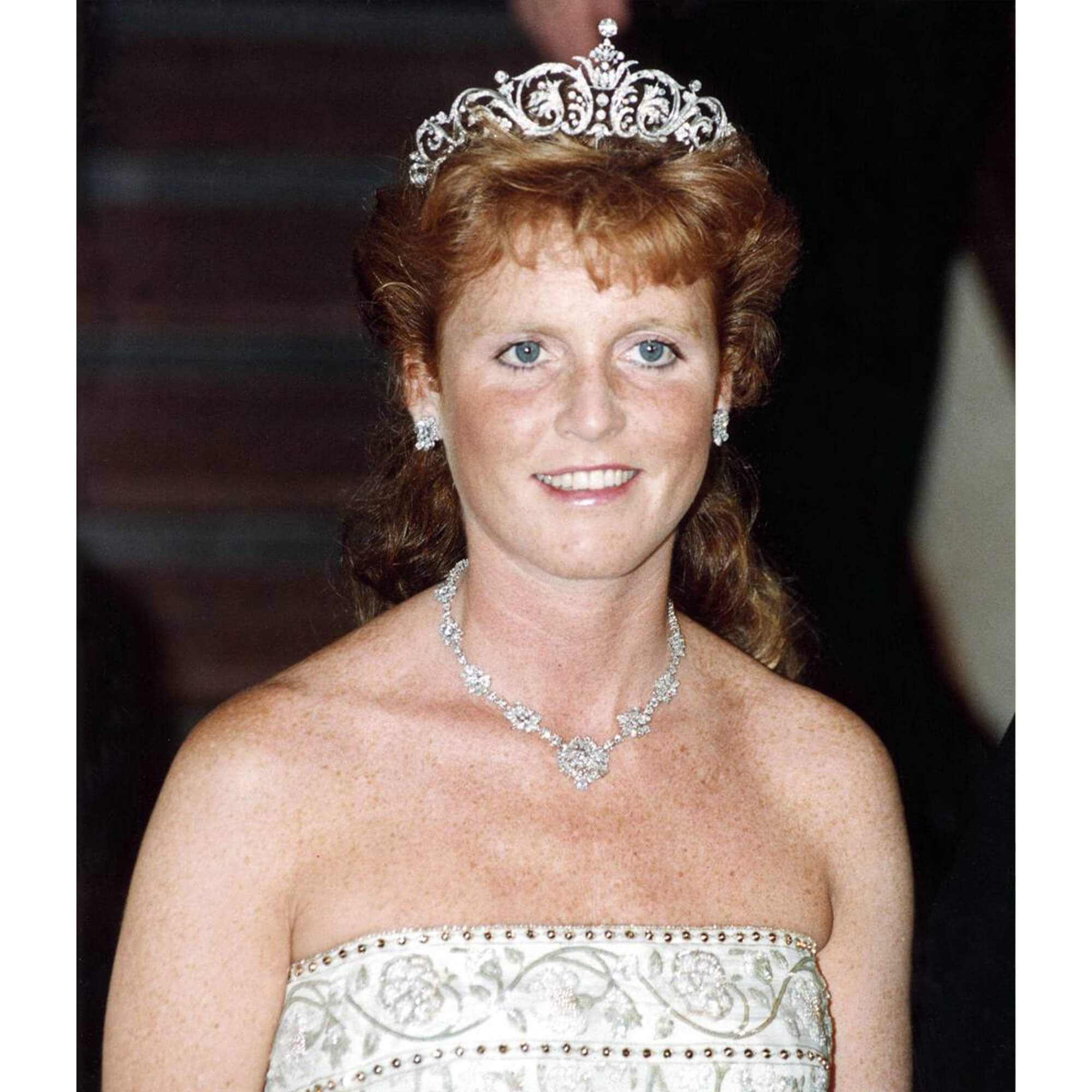
Given to Sarah, Duchess of York as a wedding gift from Queen Elizabeth II and Prince Philip, Sarah wore the York Tiara on her wedding day in 1986. The distinctive diamond scroll design reappeared in 2023 on the head of Sarah’s daughter, Princess Beatrice, at the wedding of Crown Prince Hussein of Jordan.

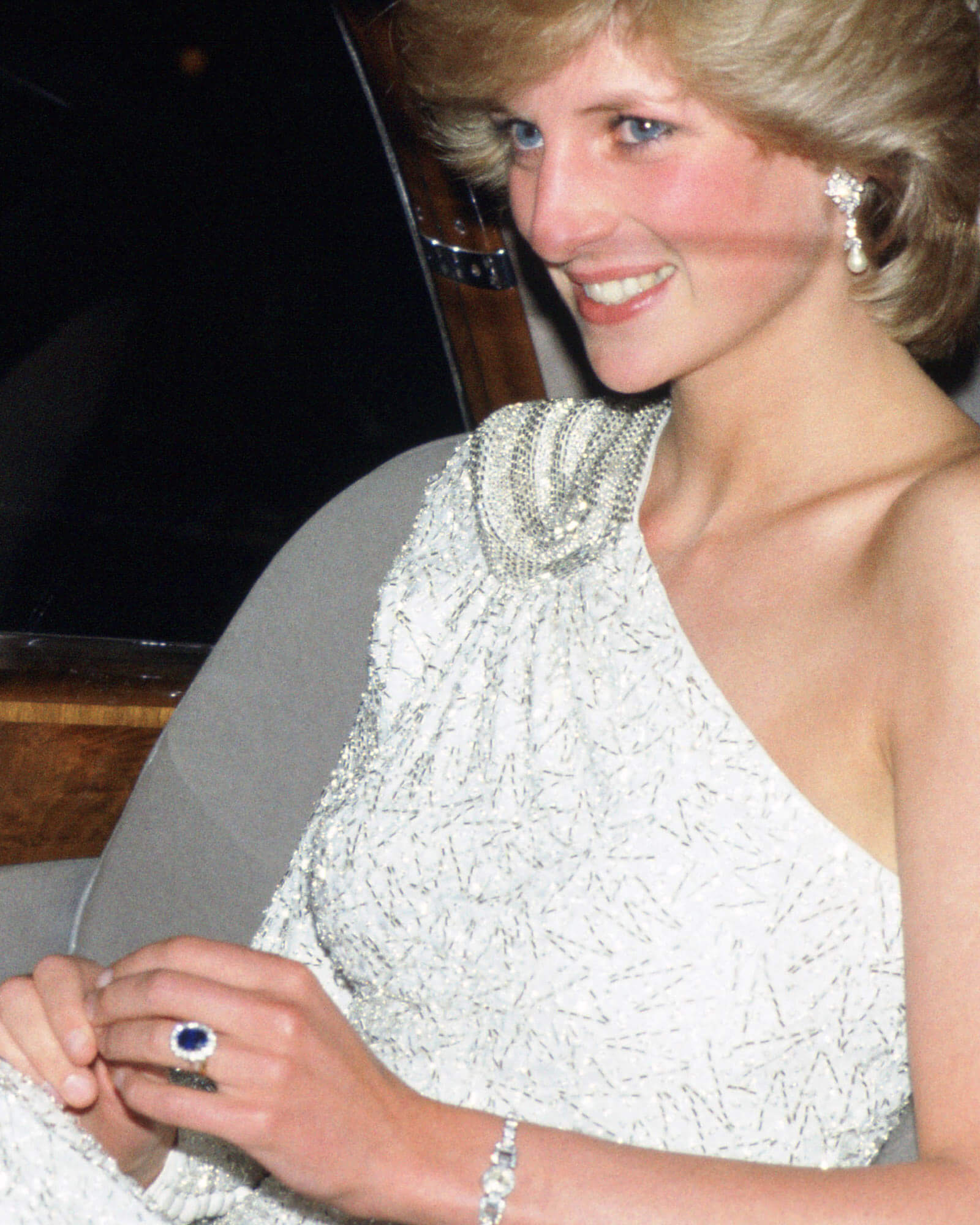
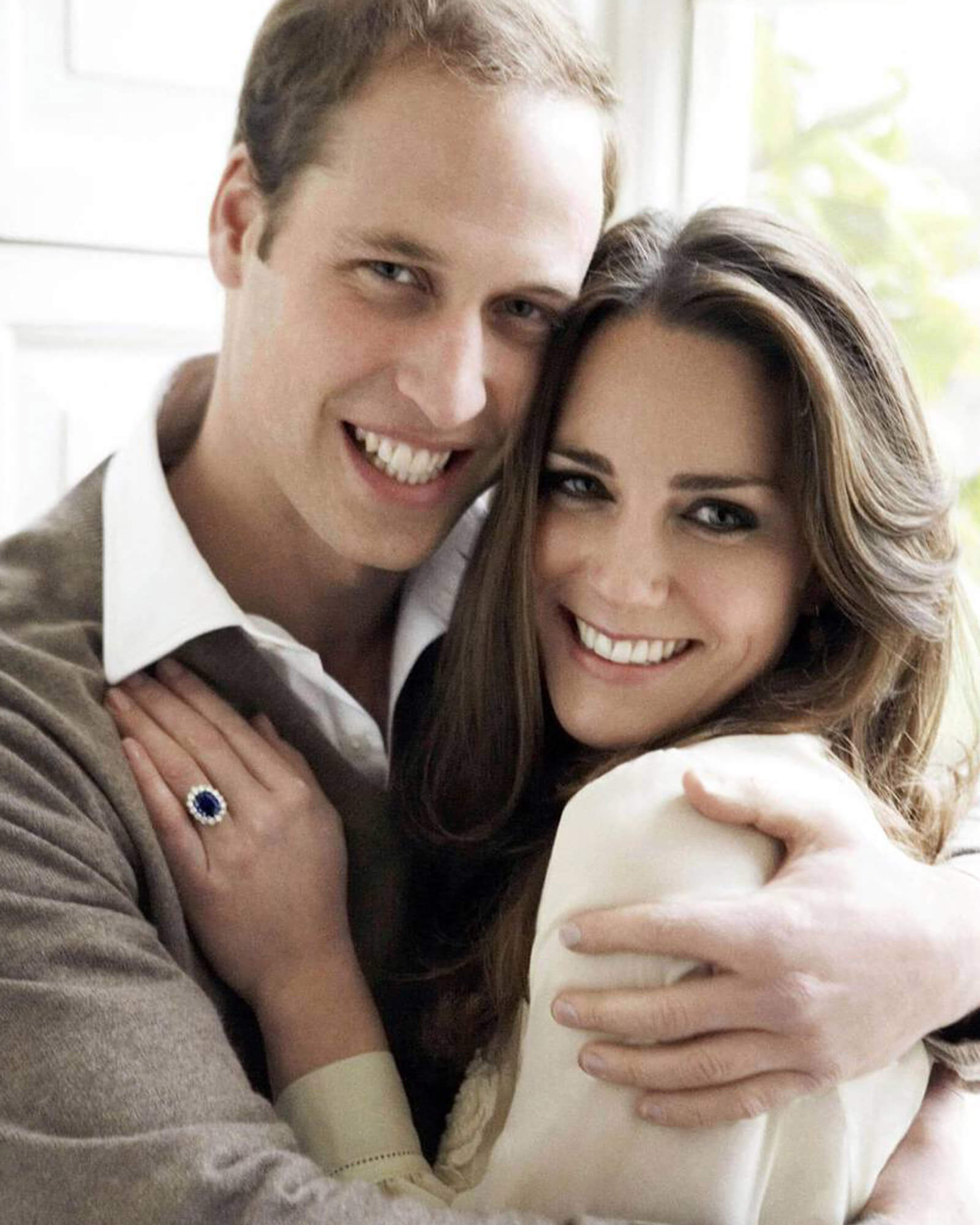
Globally famous, Princess Diana’s sapphire cluster engagement ring is perhaps the most iconic royal jewel ever made by Garrard. Personally chosen by Diana, the ring, set with a 12 carat Ceylon sapphire, was inherited by Prince Harry after Diana’s death. In 2010, Prince Harry chose to give his mother’s jewel to William, Prince of Wales so that he could propose to Catherine, Princess of Wales with it.
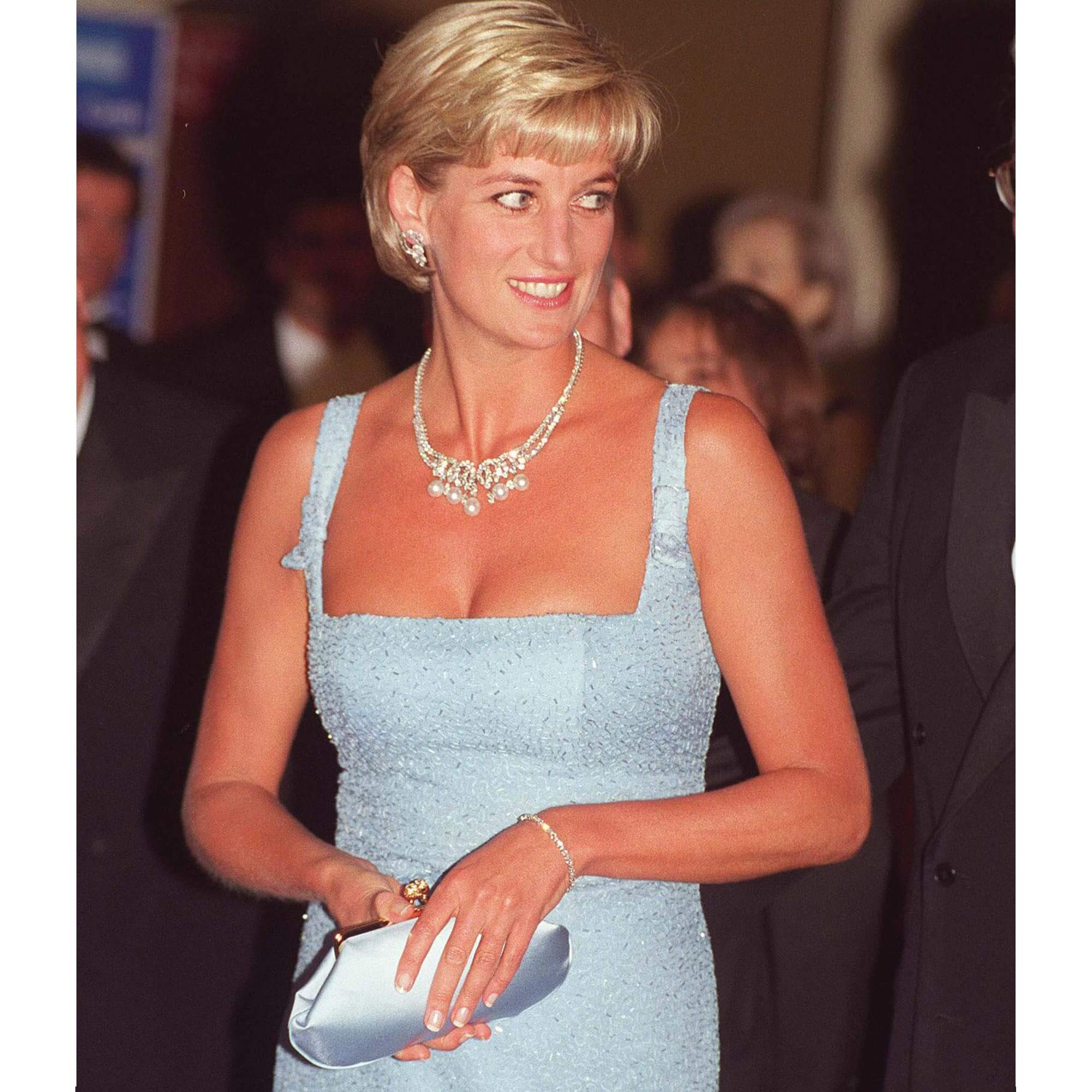
Princess Diana collaborated with Garrard on the South Sea pearl and diamond necklace that she wore to a performance of Swan Lake at the Royal Albert Hall. One of her final public appearances, Diana loved the necklace so much that she returned to Garrard shortly after to request a pair of earrings be made to match. Sadly, she passed away before the earrings were completed and never got the chance to wear the elegant pearl jewels together. In honour of Diana, the jewels are better known today as the Swan Lake Suite.